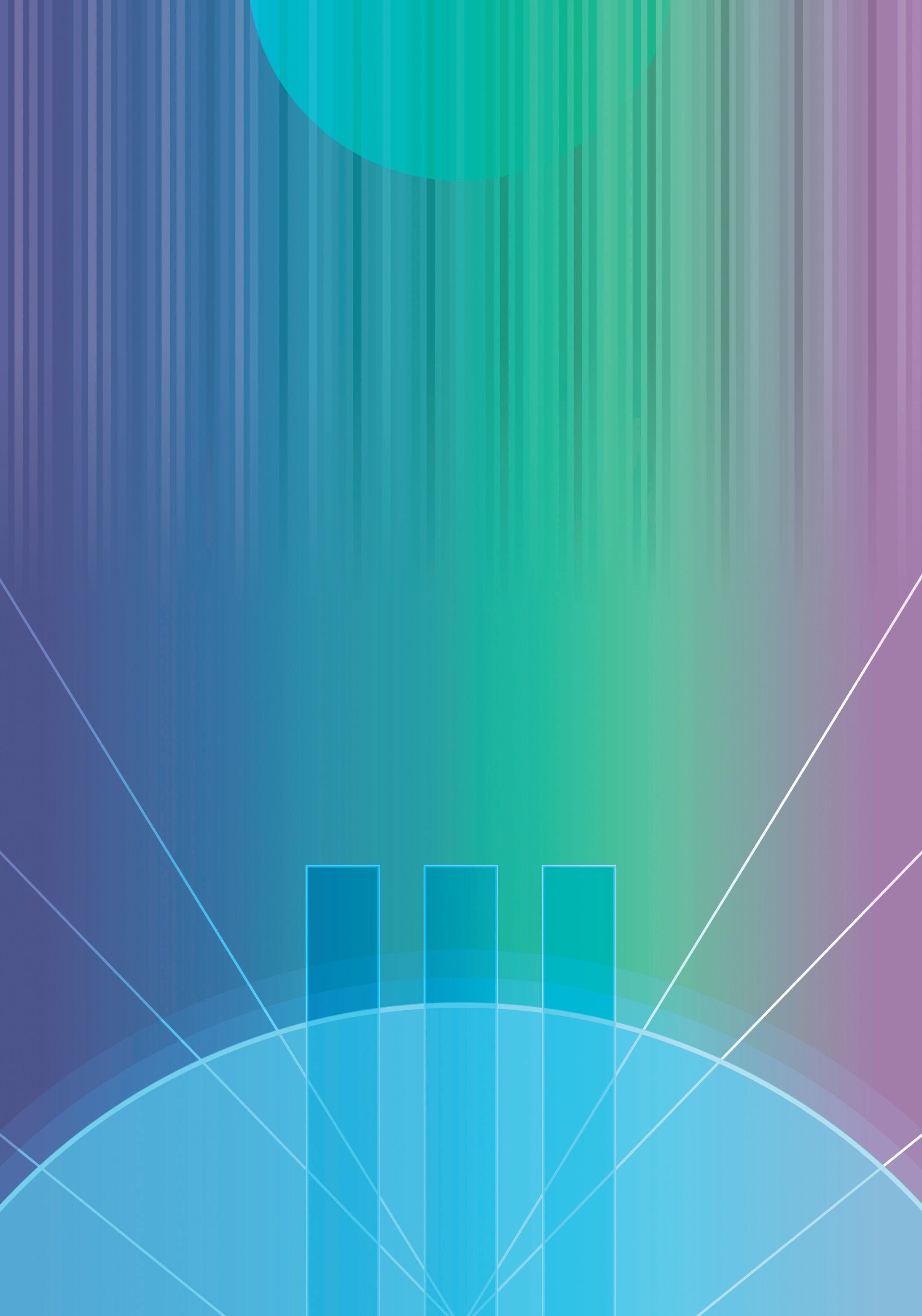







November 19, 2022 at 7:30 PM
Pre-concert lecture at 6:30 PM
November 20, 2022 at 3:00 PM
Pre-concert lecture at 2:00 PM
February 18, 2023 at 7:30 PM
Pre-concert lecture at 6:30 PM
February 19, 2023 at 3:00 PM
Pre-concert lecture at 2:00 PM
March 18, 2023 at 7:30 PM
Pre-concert lecture at 6:30 PM
March 19, 2023 at 3:00 PM
Pre-concert lecture at 2:00 PM
April 22, 2023 at 7:30 PM
Pre-concert lecture at 6:30 PM
April 23, 2023 at 3:00 PM
Pre-concert lecture at 2:00 PM
May 20, 2023 at 7:30 PM
Pre-concert lecture at 6:30 PM
May 21, 2023 at 3:00 PM
Pre-concert lecture at 2:00 PM
All Concerts at Sunset Center, Carmel


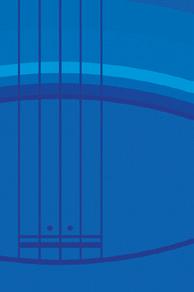

Pre-concert lectures by Music Director Jayce Ogren and guests
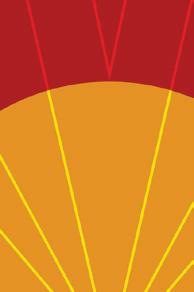
Season Launch Luncheon
Thursday November 17, 2022
MPCC Great Room, Pebble Beach
Season Opener Supper Club
Sunday, November 20, 2022
SUR at the Barnyard, Carmel
February Concert Luncheon
Thursday, February 16, 2023
MPCC Beach House, Pebble Beach
March Concert Luncheon
Thursday, March 16, 2023
MPCC Beach House, Pebble Beach
5th Annual Women’s Night Out
Bohemian Rhapsody
Pre-Concert Party
Saturday, March 18, 2023 at 6 PM
Studio 105, Sunset Center Carmel
April Concert Luncheon
Thursday, April 20, 2023
MPCC Beach House, Pebble Beach
May Concert Luncheon
Thursday, May 18, 2023
Glen Deven Ranch, Big Sur
Four Seasons Party
Friday, June 16, 2023
Cooper-Molera Adobe, Monterey
2023-2024 Subscription Renewals – May 1, 2023
Pops Concerts Tickets On Sale – May 20, 2023
Single Tickets On Sale – August 1, 2023

Welcome to Overture, our thrilling and dynamic 2022-2023 concert season, and a new beginning for the Monterey Symphony!


I’m so pleased to be your Music Director, and to have the deeply rewarding opportunity to work with this wonderful orchestra in such an extraordinary place. I’ve been coming to Monterey County throughout my life, and I love its beauty and vibrant spirit. My wife, son, and I look forward to getting to know it even better over the years. We also look forward to getting to know all of you, our devoted and energetic audience and supporters, at the many concerts and events throughout the season. Please say hello whenever you have the opportunity!
I can hardly wait to share these incredible concerts with all of you. First and foremost, they’ll be filled with powerful orchestral playing by your Monterey Symphony.
We’ll be collaborating with a truly world-class group of guest soloists, including Timothy McAllister (perhaps the greatest saxophonist on the planet), the innovative pianist Ran Dank, renowned operatic baritone Joshua Hopkins, violin phenom Tessa Lark, and local favorite Edwin Huizinga, playing the world premiere of a new violin concerto by Monterey Symphony Composer-in-Residence John Wineglass. In May, we will present the first ever Monterey Symphony performances of Ravel’s complete Daphnis et Chloé, one of the greatest masterpieces of French Impressionism, bringing our season to a brilliant and festive close.
Thank you for supporting great music in Monterey County! Please enjoy!
“There will be surprising twists, new sounds and colors, familiar favorites, and dazzling virtuosity.”
Jayce Ogren, Music Director
WELCOME to OVERTURE, Jayce Ogren’s inaugural season as Music Director of the Monterey Symphony! We have a fantastic lineup of concerts and soloists making their debut with the Symphony. We’re so grateful to everyone who participated in the search for our new Music Director. We had robust responses to all our surveys and fabulous attendance at the search concerts. Thank you as well for joining us at the Forest Theater for our second volume of Love Letter to Carmel in September. We were delighted to showcase the fabulous composers who make Monterey County their home.
It is an exciting time for the Symphony. The board and staff are strong and the commitment to presenting great music is alive and well. The past few years have shown us how adaptable we can be to changing circumstances. In that spirit, we have adopted several strategic principles to guide our decision making. Our artistic principles focus on excellence, support of our musicians, revitalizing and commissioning new works. In the near future we will reimagine and restart our youth music education programs. We want to grow and expand our program offerings, and the Forest Theater concerts are a key component of this – they have become an essential piece of what we do.


Our management principles focus on sustainability of the organization and support of our artistic plans. You, our audience members and donors, are the very soul of that success. We greatly appreciate your energetic participation and vital financial support. A special thank you goes to our season sponsor – Bertie Elliott – thank you for always believing in the Symphony!
See you at the concerts!
Charles Schimmel, Board Chair Nicola Reilly, President and CEO
“You, our audience members and donors, are the very soul of that success.”
Jayce Ogren
Sponsored by: Shirley & Herschel Loomis and Sherrie McCullough
Christina Mok, Concertmaster
Thomas Yee, Associate Concertmaster
Xander Abbe
Allison Gigi Dang
Claudia Fountain
Holly Heilig-Gaul
Tina Minn
Rochelle Nguyen
Emily Packard
Jessica Poll
Sue-mi Shin
Jay Zhong
Section sponsor: Pat Morgan
Zlata Grekov, Principal
Lila Woolman, Assistant Principal
Sarah Chazin
Ivelina Kofler
Akiko Kojima
Calvin E. Lewis, Jr.
Kevin Matson
Tingting Volonts
Eugenia Wie
Shelby Yamin
Vladimir Khalikulov, Principal
David Allcott, Assistant Principal
Valerie Bengal
Fan Hu
Chad Kaltinger
Sarah Lee
Alexander Volonts
Robin Bonnell, Principal
Adelle-Akiko Kearns, Assistant Principal
Sponsored by: Dave & Judi Zaches
Drew Ford
Sponsored by: Nancy Verska
Nancy Kim
Linda Mehrabian
Sponsored by: Maureen Sanders
Isaac Pastor-Chermak
Saul Richmond-Rakerd
Robin Snyder
BASS
Bruce Moyer, Principal
Sponsored by: Gary & Carolyn Bjorklund, and Gloria Souza & Sandie Borthwick
Christy Crews, Assistant Principal
Robert Ryan Ashley
Richard Duke
Stan Poplin
Dawn Walker, Principal
Sponsored by: Elaine & Neal Whitman
Teresa Orozco
Sponsored by: Carol Lee Holland
PICCOLO/THIRD FLUTE
Kyounghee Park Uhm, Principal
OBOE
Bennie Cottone, Principal
Stephen Henry
ENGLISH HORN/THIRD OBOE
Ruth Stuart Burroughs, Principal
CLARINET
Julia Sarah Bonomo, Principal
BASSOON
Nicolasa Kuster
HORN
Daniel Nebel, Principal
Alicia Mastromonaco, Assistant Principal
Caitlyn Smith-Franklin
Beth Zare
Sadie Glass
TRUMPET
Dylan Girard, Principal
Owen Miyoshi
Sponsored by: Valera Lyles
Curtis Nash
TROMBONE
Phil Keen, Principal
Will Baker, Principal Bass
TUBA
Forrest Byram, Principal
TIMPANI
Peter Thielen, Principal
PERCUSSION
Frank Wyant, Principal
Victor Avdienko
James Kassis
HARP
Karen Julie Kirk, Principal
HARPSICHORD
Jonathan Salzedo, Principal
COMPOSER IN RESIDENCE
John Wineglass
Sponsored by: Valera Lyles
MUSIC DIRECTOR EMERITUS
Max Bragado-Darman
TECHNICAL DIRECTORS
Pat Fitzsimmons (Sunset Center)
Sponsored by: Jane Barry
Douglas Mueller (Forest Theater)
LIGHTING DESIGNER
Kendall Smith
RECORDING ENGINEER
Arman Boyles
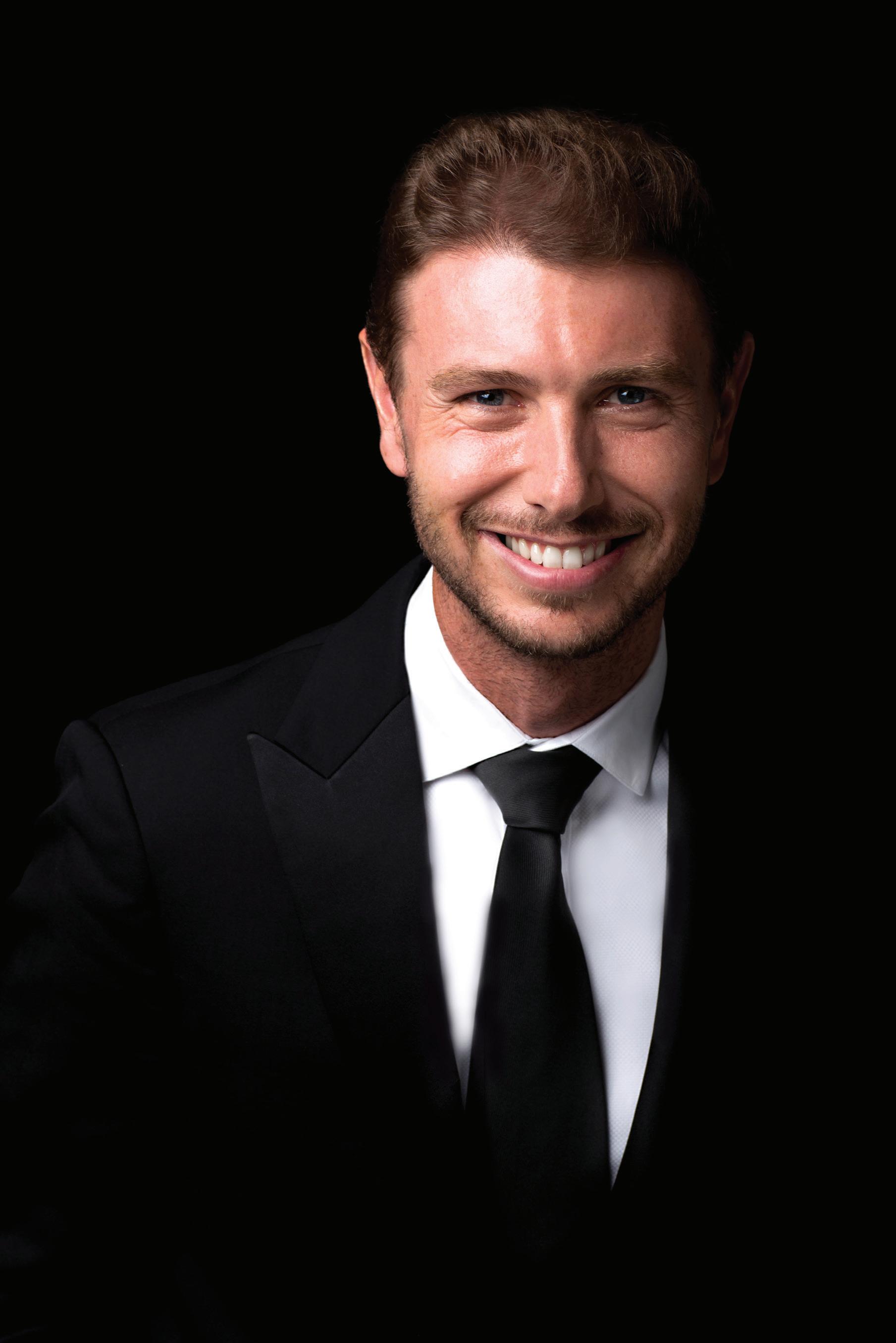
Jayce Ogren has established himself as one of the most innovative and versatile conductors of his generation. From symphonic concerts to community service programs to operatic premieres, he is a leader in breaking down barriers between audiences and great music.
Mr. Ogren began his career as Assistant Conductor of The Cleveland Orchestra, an appointment he held from 2006-2009. In the years since, he has conducted many of the world’s most prominent orchestras, including the BBC Symphony, Boston Symphony, Ensemble Intercontemporain, Hong Kong Philharmonic, Los Angeles Philharmonic, New York Philharmonic, San Francisco Symphony and Saint Paul Chamber Orchestra.
Among the major projects Mr. Ogren has led are the world premieres of David Lang’s symphony for a broken orchestra at Philadelphia’s 23rd Street Armory and Jack Perla’s Shalimar the Clown at Opera Theatre of St. Louis; the New York premiere of Leonard Bernstein’s A Quiet Place at Lincoln Center; and the U.S. and Scandinavian premieres of Rufus Wainwright’s Prima Donna.
A devoted educator, Mr. Ogren was recently appointed Assistant Professor of Music at the University of Michigan, where he conducts the Philharmonia Orchestra, Contemporary Directions Ensemble and the Michigan Youth Symphony Orchestra. He has worked with students at the Bowdoin International Music Festival, Cleveland Institute of Music, the Juilliard School, Music Academy of the West, Princeton University and Verbier Festival.
Jayce Ogren holds degrees from St. Olaf College, New England Conservatory and the Royal College of Music in Stockholm, where he studied as a Fulbright Scholar with Alan Gilbert and Jorma Panula. His wife, Carly Berger Ogren, is an architect, and together they have an adventurous 4 year old son, Alistair. An avid athlete, he has competed in the Big Sur, Boston and NYC marathons, the JFK 50 Miler trail run, and the Ironman Lake Placid triathlon.

NOVEMBER 19 & 20, 2022
SUNSET CENTER, CARMEL
Emergence is sponsored by Sherrie McCullough
Berceuse and Finale from L’Oiseau de feu (The Firebird) [running time 6’]
Jayce Ogren, Music Director and Conductor Timothy McAllister, saxophone Igor Stravinsky (1882-1971)
Berceuse
Finale
Turn the Key [11’]
Concerto in E-flat major for Alto Saxophone and String Orchestra [13’]
INTERMISSION [20’]
Intermezzo from Act III of Manon Lescaut [6’]
Pictures at an Exhibition [30’]
Promenade
Gnomus
Il Vecchio Castello (The Old Castle)
Tuileries
Bydlo
Ballet of Chicks in Their Shells
Samuel Goldenberg and Shmuel
The Marketplace at Limoges
The Hut on Fowls’ Legs
The Great Gate of Kiev
Steven Mackey (b. 1956)
Alexander Glazunov (1865-1936)
Giacomo Puccini (1858-1924)
Modest Mussorgsky (1839-1881)
Maurice Ravel (1875-1937)
The November concert will be rebroadcast on KAZU’s HD2 Classical station on December 3, 2022, and December 4, 2022, both at 4PM.
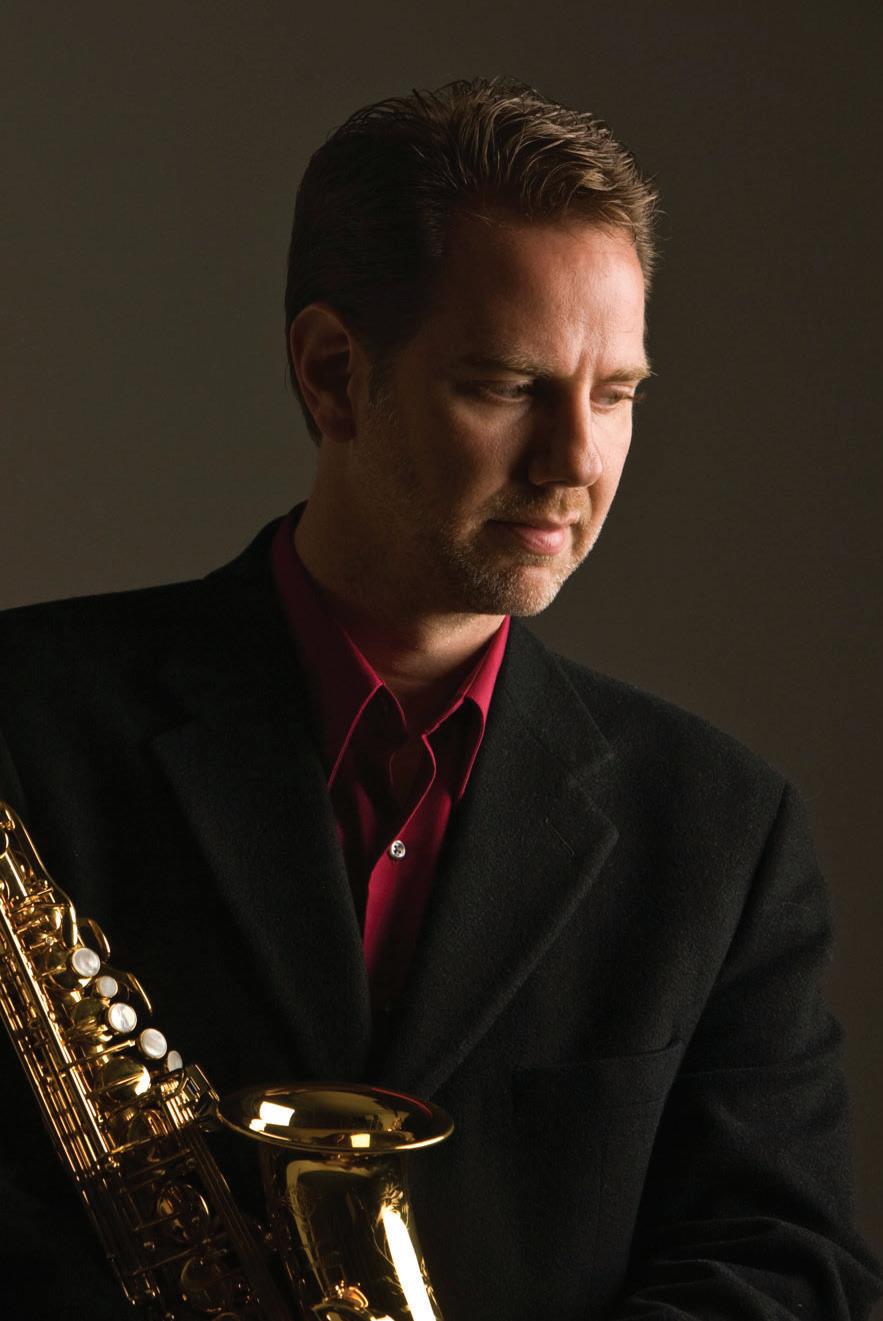
Described as “a titan of contemporary music and the instrument…” (The Cleveland Plain Dealer), Timothy McAllister is an acclaimed soloist with over fifty recordings and two-hundred world premieres. He has appeared with over forty of the world’s most prominent orchestras and ensembles in over twenty countries.
His rise to international recognition began in 2013 with the world premiere performance of John Adams’s Saxophone Concerto with the Sydney Symphony Orchestra. His recordings of Adams’s City Noir and the Concerto with the St. Louis Symphony and conductor David Robertson earned a 2015 GRAMMY® Award for “Best Orchestral Performance.”
McAllister’s 2018 recordings of Kenneth Fuchs’s Saxophone Concerto Rush with JoAnn Falletta and the London Symphony Orchestra and City Noir with the Berlin Philharmonic under Gustavo Dudamel both appeared on 2019 GRAMMY® nominated albums, with the Fuchs winning “Best Classical Compendium.” Recent performances include the China Premiere of the Adams Concerto with Edo de Waart and the Hong Kong Philharmonic as well as the Belgium Premiere of Guillaume Connesson’s Saxophone Concerto A Kind of Trane under Stéphane Denève and the Brussels Philharmonic
McAllister’s 21-22 Season featured debut performances of John Corigliano’s Triathalon with the San Francisco Symphony, and the world premiere of MacArthur Foundation ‘Genius’ Fellow and virtuoso performer Tyshawn Sorey’s saxophone concerto at the Lucerne Festival. Recent and forthcoming engagements include the Albany Symphony, Atlanta Symphony Orchestra, Milwaukee Symphony Orchestra, Buffalo Philharmonic, Atlanta Symphony Orchestra, Grand Rapids Symphony, Seattle Symphony, and National Orchestral Institute Philharmonic.
A respected teacher of his instrument, McAllister is Professor of Saxophone at the University of Michigan School of Music, Theatre and Dance.

Eager for the opportunity to compose a largescale work for a visionary such as Diaghilev, Stravinsky started work on the score before the final agreement was even reached. Stravinsky composed the score to the entire ballet between November 1909 and March 1910 at a dacha that belonged to his teacher Rimsky-Korsakov’s family.
Were it not for the disinterest or procrastination of several other composers before him, we might never have heard Igor Stravinsky’s phenomenal music for The Firebird. The opportunity for Igor Stravinsky (1882-1971) to compose The Firebird score for Serge Diaghilev and the Ballet Russes came to him almost by accident. Diaghilev, the famous Russian impresario of the Ballet Russes in Paris, had first asked Nikolai Tcherepnin, but he withdrew from the project for unknown reasons. Next on the list was Anatoli Lyadov, who eventually declined the project after delaying endlessly. There was discussion of asking Alexander Glazunov, or even possibly Nikolai Sokolov, before Diaghilev finally approached the relatively unknown 27-yearold Stravinsky in 1909.
The ballet garnered huge acclaim at its premiere and launched Stravinsky into an international career. It was also the first in a series of collaborations between the composer and Diaghilev, including The Rite of Spring, Petrouchka, Le Chant du Rossignol, and Oedipus Rex, to name a few. This performance with the Monterey Symphony includes just the final two pieces from a symphonic suite that Stravinsky first arranged in 1919. In the Berceuse, or Lullaby, the evil King Kashchei and his minions have worn themselves out after an infernal dance, so the Firebird puts them to sleep with her lullaby. The finale opens with a solo horn playing a melody from a collection of folk songs that RimskyKorsakov had published. The ending motif represents the Firebird, as Prince Ivan finds and breaks an enchanted egg that Kashchei had used to spell and entrap thirteen princesses. In this ballet, an amalgamation of several Russian fairytales, the good prince falls in love with, then marries the most beautiful of the princesses (of course), and they all live happily ever after.
of the above.” The piece is based around a rhythmic motive in 7/8 time- long, long, short, short. Mackey writes that “the stinginess of the musical material at the beginning” eventually leads to a “generous, joyous sprit and culminates in an unabashed celebration” at the end of the piece.
Steven Mackey was commissioned to write Turn the Key to celebrate the 2006 opening of the Knight Concert Hall at the Adrienne Arsht Center for the Performing Arts in Miami, Florida. The work was premiered by the New World Symphony and Michael Tilson Thomas. The piece was written as a musical opportunity to put the concert hall through its paces. As Mackey writes, the piece has a variety of sonic groupings; “small moments for solo harp and solo violin, big arrivals for the whole orchestra, clangorous percussion, silky passages for string orchestra, plucky staccato passages, brassy wind band music, intricate rhythmic interplay, dense counterpoint, and various combinations
Mackey notes that the title itself, Turn the Key, has several meanings: First, it refers to the opening of a new concert hall, and second, the 7/8 rhythm throughout evokes the rhythmic ostinato of the clave rhythms of Afro-Cuban origins. He also defines the Spanish word clave as “crucial for understanding,” noting that it is a secondary definition for “key.” Just as this piece opened an era in a new concert hall, so will it open an era with Monterey Symphony’s new music director, Jayce Ogren.

“...Turn the Key, has several meanings: First, it refers to the opening of a new concert hall...”
Glazunov’s scores to his colleague, Nikolai Rimsky-Korsakov, who took Glazunov under his wing and mentored him. He quickly garnered attention and praise for his compositions, and several of his orchestral works were premiered over the next several years. At the age of 24, Glazunov became a professor at the Saint Petersburg Conservatory, where he remained until he left the Soviet Union in 1928, never to return.
Glazunov wrote his saxophone concerto in 1934 for the esteemed German saxophonist, Sigurd Raschèr. Although Glazunov was unable to attend the performance, the piece was premiered on November 25th of that year in Sweden where Raschèr was living in exile. In fact, Glazunov never heard the work with an orchestra, as the first performance in Paris where Glazunov lived at the end of his life, occurred shortly after his death in 1936.
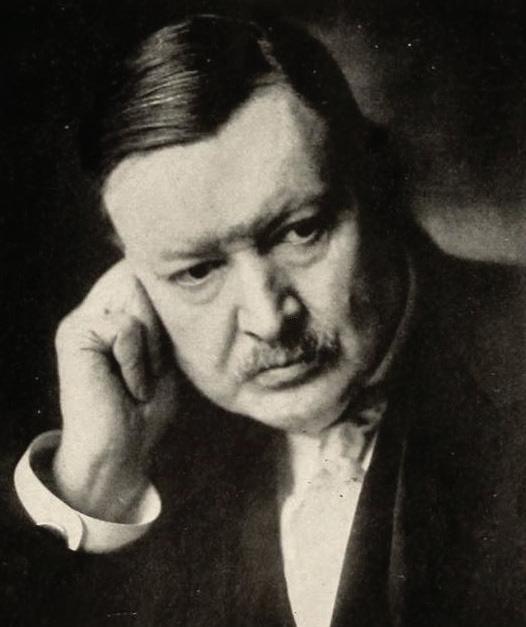
Glazunov was a child prodigy composer and gained the attention of the “Mighty Five” group of composers (Mussorgky, Cui, Balakirev, Borodin and Rimsky-Korsakov) when he was a young teenager. The leader of the group, Mily Balakirev, gave one of
The concerto was not the first for saxophone and orchestra, but it is one of the more famous early saxophone concerti. Glazunov also remains firmly within his romantic style. Even though the saxophone by this point was an important fixture within the jazz world, Glazunov treats the instrument in a classical fashion. The concerto is performed as a single through-composed piece, although there are a few distinct sections. The exposition is not a true sonata form but leads into a brief development. From there, a transition section ends with a cadenza by the soloist, and finally, a romantic fugato that jaunts to the finish line. This late work of Glazunov’s illustrates his creativity even toward the end of his life, and his willingness and ability to explore new timbral and musical possibilities while staying true to his Russian romantic compositional style.

The Intermezzo from Act III of Manon Lescaut by Giacomo Puccini is an instrumental interlude in the opera that portends the grim fate of the title character and her lover, Chevalier des Grieux. The opera, Puccini’s third, was a resounding success from its premiere in Turin, despite its difficulty getting off the ground. Puccini had to convince his publisher and advisor Giulio Ricordi to agree to the libretto, as both Massenet and Auber had previously set Antoine François Prévost’s 1731 novel, History of the Chevalier de Grieux and Manon Lescaut, to music in their earlier operas.
The interlude precedes a duet between des Grieux, a student and baronet who is nonetheless poor, and Manon, who is in jail under dubious circumstances, and is about to be deported to the French colony of Louisiana. Des Grieux, being still desperately in love with Manon, pleads with the captain to take him on as a deckhand, to which he accedes. The two lovers find themselves in the desert of Louisiana (which may have been in what is now Texas or Oklahoma), parched, hungry, and without hope. As musically foretold in the intermezzo before Act III, Act IV consists of the two singing of their love for each other before Manon eventually expires, to be followed, post-curtain, by des Grieux.

Mussorgsky was inspired to compose Pictures at an Exhibition after the unexpected death in 1873 of his good friend and artist, Viktor Hartmann. Both the composer and the artist were interested in finding a new artistic language that was uniquely Russian. Journalist Vladimir Stasov organized an exhibition of many of Hartmann’s works in February 1874. Mussorgsky decided to write a series of ten musical vignettes for the piano, interspersed with promenades, to evoke the feeling of walking through the exhibition. Pictures at an Exhibition was never publicly premiered during Mussorgsky’s lifetime. However, a decade after his death, in 1891, Michael Touschmaloff, a student of RimskyKorsakov’s, orchestrated the work. The work as we know it today, as reworked by French composer and master orchestrator Maurice Ravel, was commissioned by the Russian-born conductor Serge Koussevitsky and premiered with the Boston Symphony Orchestra in October 1922.
There are a series of promenades which connect the vignettes throughout the work, as if the listeners themselves are strolling through the gallery of Hartmann’s works. Each vignette represents one of the paintings in the exhibition. Pictures at an Exhibition combines western and Russian musical elements; many of the melodies, harmonies, and modalities evoke Russian folk polyphony. Yet there are also many western classical idioms in the music, including some of the forms and harmonic structures as well.

FEBRUARY 18 & 19, 2023
SUNSET CENTER, CARMEL
Enlighten is sponsored by Bill and Kathy Sharpe and The Martin R. Wolf Family Fund
Jayce Ogren, Music Director and Conductor Ran Dank, piano
Banner [running time 10’]
Piano Concerto No. 2 in B-flat Major, Op. 19 [28’]
I: II: III: Allegro con brio Adagio Rondo – molto allegro
INTERMISSION [20’]
Strum [8’]
Symphony No. 40 in G minor, K. 550 [30’]
I: II: III: IV:
Molto allegro Andante Menuetto - Allegretto Finale - Allegro assai
Jessie Montgomery (b. 1981)
Ludwig van Beethoven (1770-1827)
Jessie Montgomery (b. 1981)
Wolfgang Amadeus Mozart (1756-1791)

Mr. Dank’s performances have garnered critical acclaim for his mastery of a wide spectrum of musical styles. He has appeared as soloist with the orchestras of Cleveland, Sydney, St. Luke’s, Portland, Eugene, Toledo, Hawaii, Kansas City, Vermont, Charleston, Jerusalem, Valencia, Phoenix, Hilton Head, among others, and under the baton of some of the world’s leading conductors including Michael Stern, Jahja Ling, Michael Christie, Kirill Karabits, Jun Märkl, Pinchas Zukerman, Jorge Mester, Jaime Laredo, and Ken-David Masur. Ran also appeared with the Westchester Philharmonic and Jayce Ogren in a performance of Beethoven’s 4th Piano Concerto.
His chamber performances have included Chanel in Tokyo, Great Lakes, Bridgehampton, Cooperstown, Mänttä, Bowdoin, Maverick, Skaneateles, and Montreal, and he has collaborated with luminaries of the field such as Paul Watkins, Augustin Hadelich, Eugene Drucker, Jaime Laredo, Sharon Robinson, James Ehnes, and The Orion, Shanghai, Takács, and Dover String Quartets.
Mr. Dank’s performance of Frederic Rzweski’s monumental set of variations, “The People United Will Never Be Defeated!” at the University of Chicago was selected as one of the top ten performances of 2017 by the Chicago Classical Review.
Mr. Dank is an ardent advocate for contemporary music, and has performed Kevin Puts’ piano concerto Night, the Tobias Picker concerto, Keys to the City, William Bolcom’s Pulitzer-winning set of Twelve New Etudes, and has given, alongside pianist and wife, Soyeon Kate Lee, the world premieres of Rzewski’s Four Hands, and Alexander Goehr’s Seven Impromptus. They also performed the world premiere of multiple Grammy-nominated pianist and composer’s Marc-André Hamelin’s Tango for piano four-hands Ran Dank is the recipient of numerous honors, including the Naumburg Piano Competition and the Sydney International Piano Competition, and First Prize winner of the Hilton Head International Piano Competition.
Ran Dank is sponsored by Carol Lee Holland
solo string quartet against the rest of the orchestra, evoking a contrast between the individual and the larger community of the orchestra.
This program is one of juxtapositions: the most traditional figures of the Western Art Music canon, Beethoven and Mozart, and contemporary American composer, Jessie Montgomery.



Jessie Montgomery was commissioned in 2014 by the Sphinx Organization and the Joyce Foundation to compose Banner. It is a commemoration of the 200th anniversary of Francis Scott Key’s setting of the lyrics to the “Star Spangled Banner.” Montgomery writes that in this piece she attempts to answer the question, “what does an anthem for the 21st century sound like in today’s multi-cultural environment?” Her answer incorporates portions of the melody of the “Star Spangled Banner” within a variety of musical styles that evoke a range of American musical vocabularies. Montgomery juxtaposes a
“The Star Spangled Banner” has become an integral part of our national identity as the national anthem, but interestingly, it has been the official anthem of the United States for less than a century. Francis Scott Key set the lyrics to the melody in 1814, to the tune of a 1776 British drinking song. The song was adopted in various military settings as early as the late nineteenth century but was repeatedly voted down in Congress as a candidate for the national anthem. It was not until 1931 that President Herbert Hoover signed a bill naming the piece as the U.S. national anthem. The piece is not without its complications. “The Star Spangled Banner,” writes Montgomery, ‘is an ideal subject for exploration in contradictions. For most Americans, the song represents a paradigm of liberty and solidarity against fierce odds, and for others it implies a contradiction between the ideals of freedom and the realities of injustice and oppression.”
In her work, Montgomery reshapes that familiar melody into a new, evocative work that encourages the listener to reconsider their relationship to the national anthem, American music, and the multicultural landscape of the United States. Montgomery’s work uses this most familiar melody to ask the listener to possibly question their firmly entrenched beliefs.

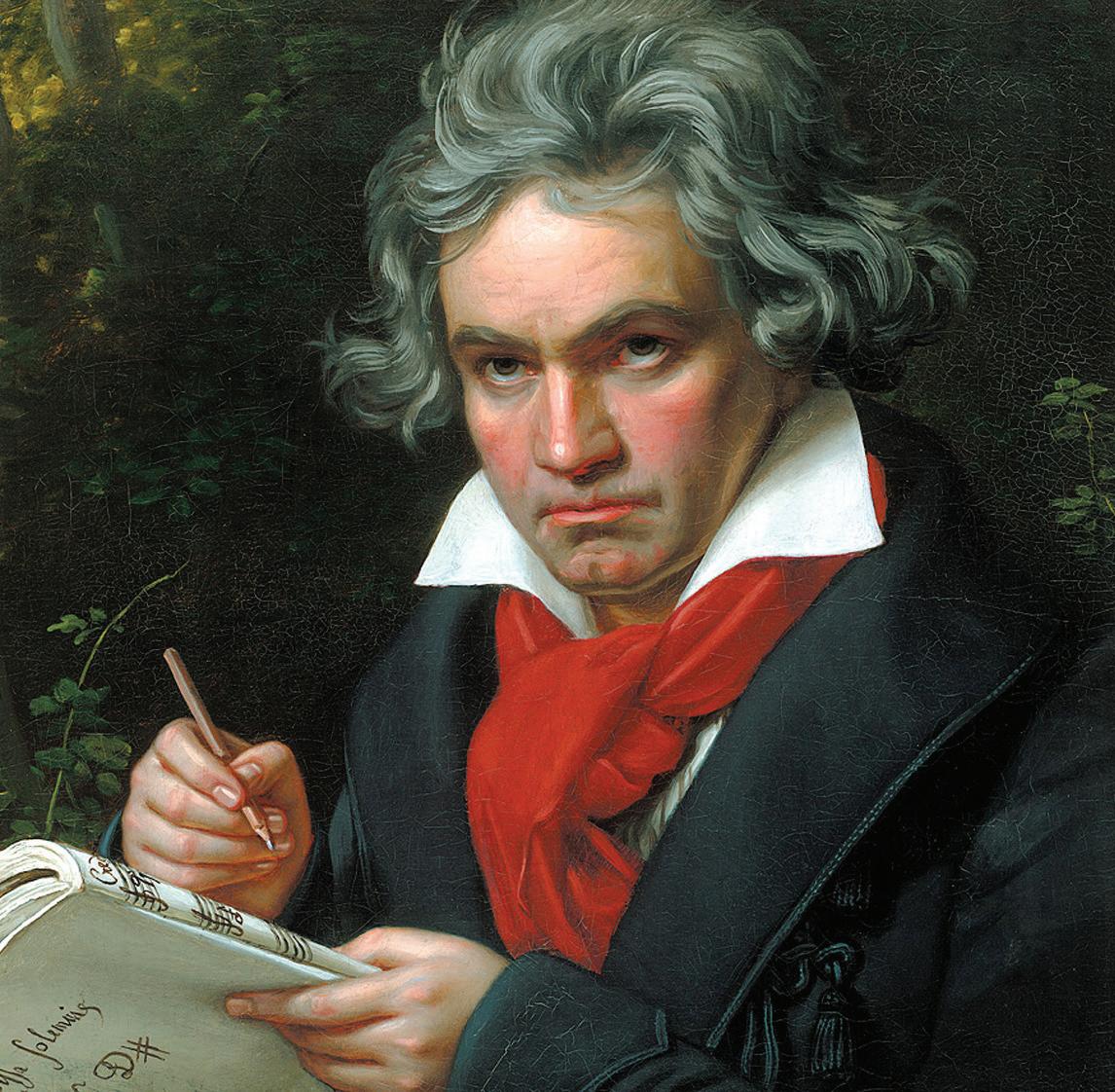
Beethoven moved from his hometown of Bonn to the musical mecca of Vienna in 1792 and lived there until his death. He completed the first three of his five piano concertos in his early years in Vienna, including his second, the B-flat Major concerto, Op. 19. Beethoven had begun sketches for this concerto years earlier, while still living in Bonn, perhaps when he was as young as 15, but he did not publish the work until 1801. However, it is possible that he premiered the work as early as 1795, when he was a composer and performer at a benefit concert put on by the Vienna Composers Society, an organization that supported the widows and orphans of musicians in Vienna.
Beethoven’s second piano concerto was undoubtedly influenced by another former denizen of Vienna, Wolfgang Amadeus Mozart. Although Mozart died shortly before Beethoven moved to Vienna, the two had met in 1787 when Beethoven visited the city. Rather than the more conventional flashy virtuoso playing from the soloist with the orchestra serving as accompanist, Beethoven’s music uses the orchestra as more of a conversational partner with the soloist. His latter three concertos are largescale orchestral works, but the second piano concerto is more intimate, evocative of chamber music. In a possible nod to Mozart’s influence on him, Beethoven’s second concerto is also almost classical in style, while the keyboard playing is very much in the style of Beethoven’s own playing. This is corroborated by the fact that Beethoven improvised much of the concerto during its premiere. It is also possible that he was influence by his studies with Georg Albrechstberger in Vienna, who had put Beethoven on a steady diet of contrapuntal exercises, giving him a more formal music composition training than his other famous teacher, Haydn.
“...Beethoven’s music uses the orchestra as more of a conversational partner with the soloist.”
Jessie Montgomery was commissioned by Community MusicWorks to compose Strum, which was premiered by the Providence String Quartet and guests of the Community MusicWorks Players in 2006. Montgomery eventually arranged it for her string quartet, the Catalyst Quartet, which performed it at a concert celebrating the 15th annual Sphinx Competition. The Sphinx Organization is a social justice group that is dedicated to improving diversity in the arts and is focused on increasing representation of Black and Latinx artists in classical music.
Strum, in its string orchestra form, begins with a solo quartet, with the viola and second violin juxtaposing pizzicato rhythmic ostinatos against more lyrical bowed playing in the cello and first violin. As the rest of the strings join in, the piece grows also in rhythmic intensity, with the strumming pizzicati serving as a rhythmic ostinato. Montgomery writes, “drawing on American folk idioms and the spirit of dance and movement, the piece has a kind of narrative that begins with fleeting nostalgia and transforms into ecstatic celebration.” Strum utilizes the full range of the strings from both a tessitura, timbral, and technical standpoint. Montgomery uses repeated motives, layers of rhythmic ostinato that “string together to form a bed of sound for melodies to weave in and out.” She uses this foundation of rhythmic string playing to drive the piece forward, as she uses American folk idioms and dance-like patterns to evoke a feeling of “fleeting nostalgia” that eventually evolves into “ecstatic celebration.”
“drawing on American folk idioms and the spirit of dance and movement, the piece has a kind of narrative that begins with fleeting nostalgia and transforms into ecstatic celebration.”
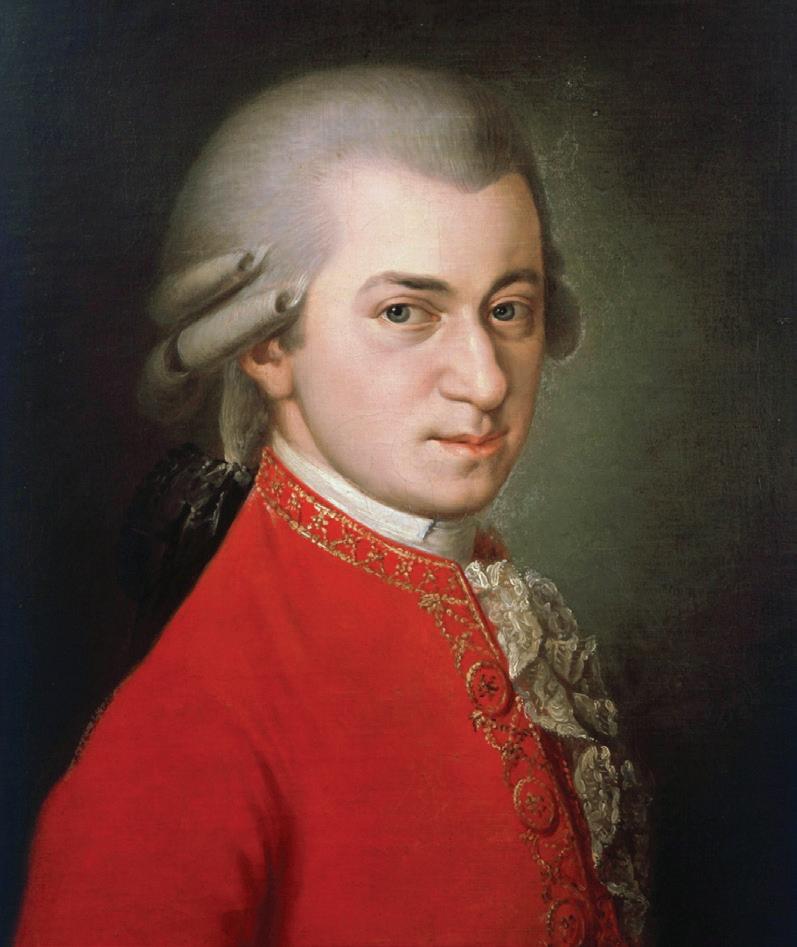
In April of 1791, Antonio Salieri conducted the work at a benefit concert he organized along with Anton Stadler, a clarinetist and good friend of Mozart’s. Originally, the symphony did not even include clarinets, but it is likely that Stadler commissioned Mozart to make a new arrangement with clarinets. Rather than rewrite the score, Mozart rearranged the oboe parts and added clarinet, supplying his publisher with a nine-page insert that complicated and delayed publication of the symphony until 1930, when German musicologist Theodor Kroyer edited an Eulenberg miniature score.
The opening to Mozart’s penultimate symphony is highly unusual with the strings playing piano, almost misterioso, and agitato. When the melody does enter, it never quite settles. The entire movement, and in some ways, the entire symphony, is characterized by its urgency, constantly hurtling forward. Written within nine short weeks of each other, the last three symphonies are vastly different from each other, but this symphony seems to potentially be the most autobiographical of the three.
Although there is no evidence that Mozart ever heard the last three symphonies performed live, we do know that the 40th symphony was performed during his lifetime.
Symphony No. 40 in G minor embodies the effect of Sturm und Drang, or storm and stress, a highly emotional compositional style that was popular at the end of the eighteenthinto the nineteenth-century. The symphony, particularly the finale, is an exercise in dramatic contrasts, vacillating between the quietest, most breathless pianissimos, and explosive fortissimo interjections. Despite his works falling out of popularity at the end of his lifetime, this symphony remained one of Mozart’s large-scale works that lived within the canon throughout the nineteenth century. Today it is one of his most beloved and most famous symphonies.
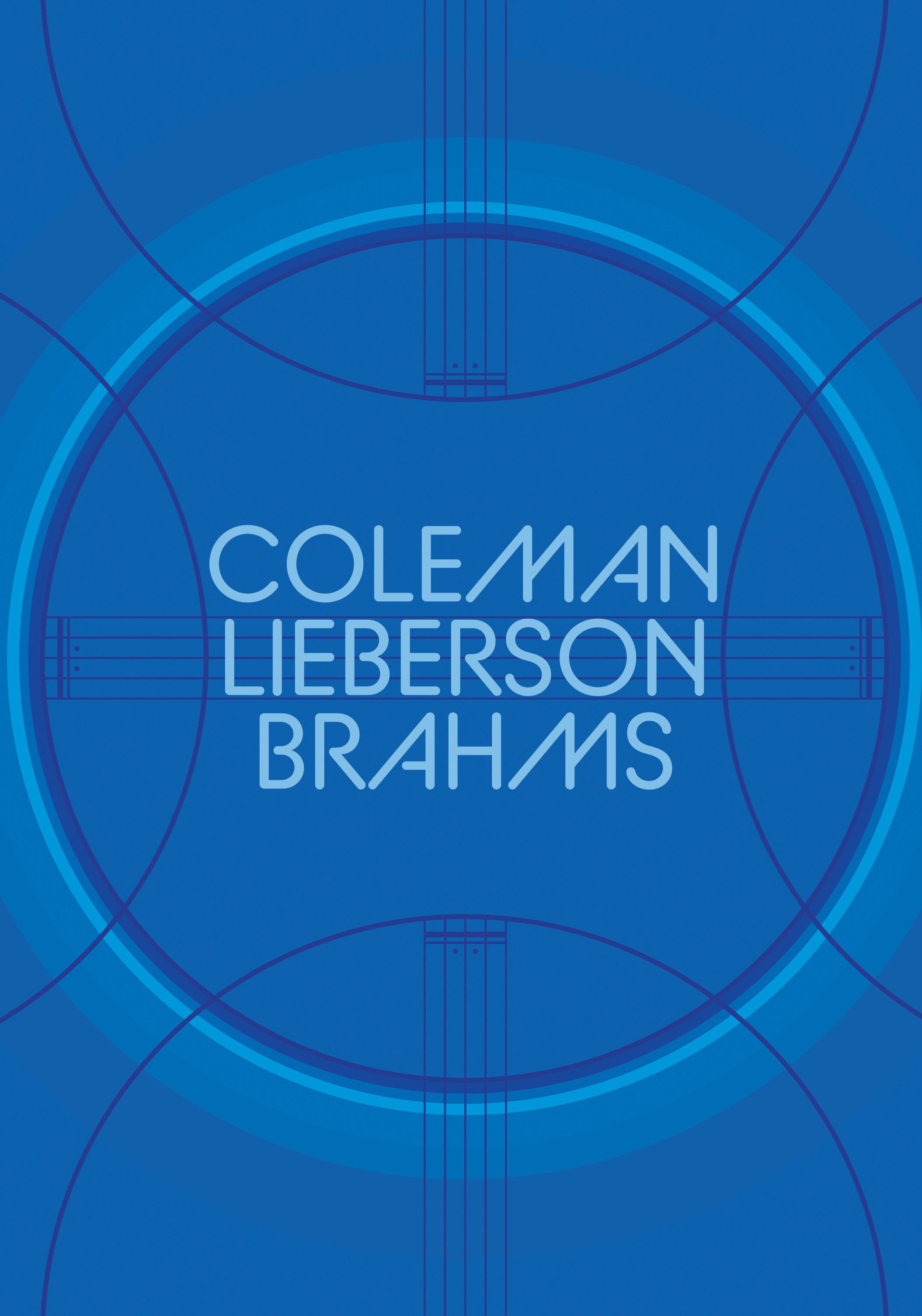
MARCH 18 & 19, 2023
SUNSET CENTER, CARMEL
Eternal is sponsored by Bill and Nancy Doolittle
Seven O’Clock Shout [running time 6’]
Jayce Ogren, Music Director and Conductor Joshua Hopkins, baritone Valerie Coleman (b. 1970)
Songs of Love and Sorrow [25’]
I: II: III:
IV: V:
Sonnet XLVI
Sonnet XII
Sonnet LII
Sonnet LXIX
Sonnet LXXXII
INTERMISSION [20’]
Symphony No. 4 in E minor, Op. 98 [40’]
I: II: III: IV:
Allegro non troppo Andante moderato
Allegro giocoso
Allegro energico e passionate
Peter Lieberson (1946-2011)
Johannes Brahms (1833-1897)
The March concert will be rebroadcast on KAZU’s HD2 Classical station on April 1, 2023, and April 2, 2023, both at 4PM.

Canadian baritone Joshua Hopkins has been described as having “…a glistening, malleable baritone of exceptional beauty, and…the technique to exploit its full range of expressive possibilities from comic bluster to melting beauty” (Opera Today).
Mr. Hopkins’ operatic repertoire includes virtually all the major baritone roles, performed in the leading houses under the baton of some of the world’s most famous conductors. In the 2021-2022 season, Joshua Hopkins returned to the Metropolitan Opera as Orpheus in the New York premiere of Matthew Aucoin’s Eurydice. He also joined Lyric Opera of Chicago for his role debut as Belcore in L’elisir d’amore and made his house debut at Seattle Opera as Count Almaviva in Le nozze di Figaro. With the Santa Fe Opera, he reprised his signature role as Figaro in Il Barbiere di Siviglia. Additional highlights of past seasons include Mr. Hopkins’s Metropolitan Opera debut as Ping in Turandot, and as Cecil in in Donizetti’s Maria Stuarda.
In remembrance of his sister and in collaboration with composer Jake Heggie and author Margaret Atwood, he created Songs for Murdered Sisters which was performed with both Houston Grand Opera and the National Arts Centre Orchestra in Ottawa.
His equally distinguished concert repertoire includes Bach’s Magnificat with Orchestra of St. Luke’s and both Nielsen’s Symphony No. 3 and Mozart’s Mass in C minor with the New York Philharmonic. He has recorded Bach’s St. John Passion with the Portland Baroque Orchestra and Arion Orchestre Baroque and appeared as soloist in Messiah with leading orchestras including the San Francisco Symphony, Philadelphia Orchestra, National Arts Centre Orchestra, and National Symphony Orchestra.
Mr. Hopkins was the winner of numerous international prizes including the Plácido Domingo Operalia Competition, the Julián Gayarre International Singing Competition, the George London Foundation and Jacqueline Desmarais Foundation awards, and the Sylva Gelber Foundation Award from the Canada Council for the Arts.




In the face of adversity, we create art. In the early days of the COVID-19 pandemic, we all thought we would only have to be in isolation for a few weeks. That which dragged into months, and even years of uncertainty, and for orchestras, that isolation forced us to be creative. Composer Valerie Coleman was commissioned by the Philadelphia Orchestra to write Seven O’Clock Shout to commemorate the “heartwarming ritual of evening serenades that brings people together amidst isolation to celebrate life and the sacrifices of heroes.”
The work was premiered in July 2020, at a fragile time in our country’s history. Coleman states that the work is a “declaration of our survival. It is something that allows us our agency to take back the kindness that is in
our hearts. To take back the emotions and things we are feeling now that cause us such turmoil.” She refers not only to the painful isolation of the pandemic, but also the enormous upheaval over the deaths of George Floyd and Breonna Taylor in the middle of 2020, and the uncertain futures ahead. Coleman notes that despite our isolation in the beginning of the pandemic, coming together as a community and cheering on essential workers at 7:00 p.m. each night as they returned home from their work, allowed us all to connect to each other, to cheer them on not only with songs and jubilation, but to cheer them on with our souls. In doing so, we not only hope for their continued safety at their jobs, but root for a better future for each of us, together.
Most important, this piece is an effort to connect us through the vessel of music. “Artists, first and foremost with our creativity” notes Coleman, “have the ability to channel it, reinvent it into a new language that connects our humanity, that connects us all.” In Seven O’Clock Shout, we hear not only a snapshot of a period in our very recent history, but also a triumphant reminder that music can help us continue through the most difficult times and remind us of our humanity and our connections to each other.


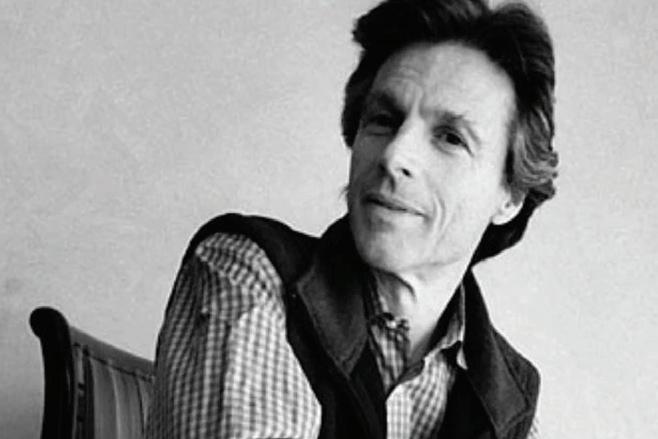
Wheras Valerie Coleman composed Seven O’Clock Shout as a commemoration of how people came together despite widespread suffering at beginning of the COVID-19 pandemic, Peter Lieberson (1946-2011) wrote Songs of Love and Sorrow to commemorate his very personal journey through deep love, loss, and resiliency that he experienced in his own life.
Lieberson was married to the famous mezzosoprano, Lorrain Hunt Lieberson, who died tragically of breast cancer in 2005 at the age of 52. Neruda Songs, his famous songs cycle, was composed for her. She premiered it with the Boston Symphony Orchestra just months before her passing. The pieces were widely and enthusiastically acclaimed, and as a result,the BSO commissioned Lieberson to write another song cycle. However, shortly after he lost his beloved wife, Lieberson himself was diagnosed with an advanced case of lymphoma and spent the next few years undergoing treatment. He could not compose, and so the second song cycle was put on hold.
When Lieberson recovered from his treatment, he found his way back to Pablo Neruda’s passionate love sonnets. It was at this time that he unexpectedly found love again, with a former Buddhist nun who would later become his wife, whom he credits with being the “cause for the resurgence of love and inspiration in my life.” Lieberson’s other joy was “having more time than I expected to see my three daughters — Katherine, Kristina, and Elisabeth — grow into their womanhood.” Amidst this, he still felt sorrow over the loss of his wife who helped him to understand the meaning of Neruda’s words on love: “just as it never had a birth, it has no death; it is like a long river, only changing lands, and changing lips.” The composer got to work setting Neruda’s poetry to music.
Baritone Gerald Finley was a friend and muse for Lieberson, and it was for him that the composer envisioned the Songs of Love and Sorrow. Lieberson knew that he did not want to write another cycle for mezzo, and wanted a baritone instead. Finley remarked that he had a quiet reaction to the music at first, because the songs seemed so personal to Lieberson’s life. However it is this connection to the composer’s private side that Finley loved about the pieces, remarking, “I suddenly thought this is Peter’s voice through me, now.” The song cycle was premiered in 2010 with Finley and the Boston Symphony Orchestra and the Monterey Symphony’s very own Jayce Ogren, who stepped in to cover for James Levine. Although Coleman’s piece serves as a reminder that we can all come together, the final “adios” passage of the cycle is a reminder that we also all will say goodbye to each other at some in our lives. But sometimes, even saying goodbye is a tremendous act of love.
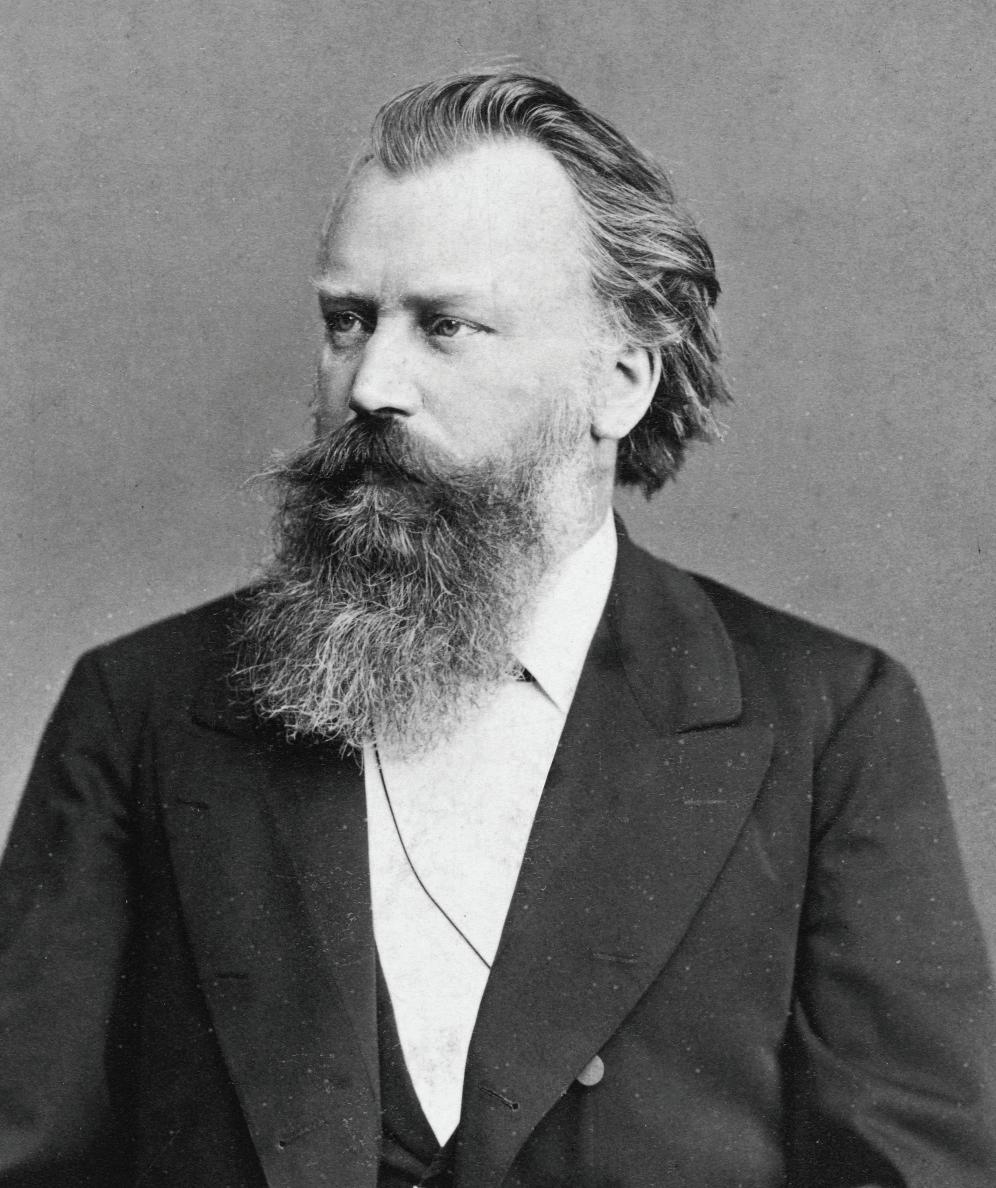
a mixed reception. One of Brahms’s closest friends and champions, Eduard Hanslick, remarked, “throughout the whole movement I felt as if I were being beaten by two terribly clever people.”
Famous for his anxiety over his place within the symphonic lineage of Haydn, Mozart, and Beethoven, Brahms did not finish his first symphony until he was well into his forties. Despite his fears of falling short of Beethoven’s great symphonic prowess, Brahms composed four monumental works that have found their way firmly into the canon of great symphonic repertoire.
Brahms wrote his fourth symphony during his summer retreats to the quiet town of Mürzzuschlag in the Austrian Alps in 1884 and 1885. At a piano four-hands reading of the symphony for his closest friends and admirers shortly after its completion, the work received
The fourth symphony, his final, builds on the trajectory of his earlier works, and expands the definition of what a symphony can be. At the same time, Brahms pays appropriate homage to his musical predecessors, relying on what some might call “archaic forms” in the piece. In the fourth movement of the symphony, Brahms utilizes a passacaglia, or a set of variations on a repeating bass ostinato and harmonic pattern. This pattern is repeated thirty times throughout the movement, each variation occupying different emotional states, sometimes terrifying or pleading, others almost existing in a timeless plane, as with the melancholy flute solo in the middle of the movement. Brahms drew the bass figure from Johann Sebastian Bach’s Cantata No. 150, Nach dir, Herr, verlanget mich, although some scholars argue that he might have also drawn his inspiration from French Baroque opera or Buxtehude’s Ciaconnia in E Minor. From where he drew his inspiration, Brahms wanted to pay homage to composers who came before him while imbuing the older structural form with late nineteenth century musical pathos. In so doing, Brahms draws a clear line between his musical language and the lineage that he was so painfully aware of throughout his compositional career.
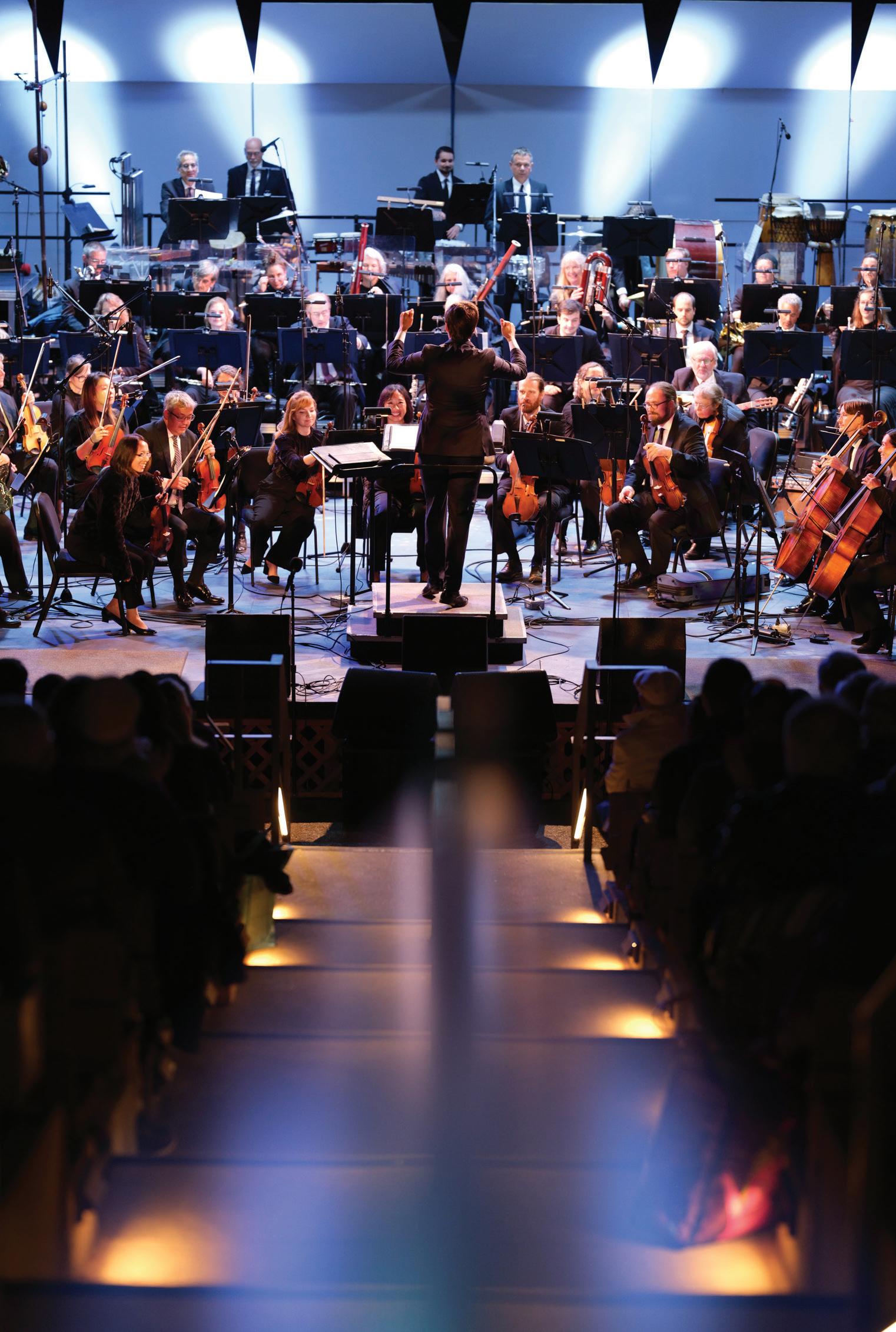

APRIL 22 & 23, 2023
SUNSET CENTER, CARMEL
Ethereal is sponsored by Beverly and Lyman Hamilton
Jayce Ogren, Music Director and Conductor Tessa Lark, violin
Violin Concerto in D minor, Op. 47 [running time 31’]
I: II: III: Allegro moderato Adagio di molto Allegro, ma non tanto
INTERMISSION [20’]
Symphony No. 2 in D Major, Op. 43 [43’]
I: II: III: IV:
Allegro Tempo andante, ma rubato Vivacissimo Finale
Jean Sibelius (1865-1957)
Jean Sibelius (1865-1957)
The April concert will be rebroadcast on KAZU’s HD2 Classical station on May 6, 2023, and May 7, 2023, both at 4PM.

Violinist Tessa Lark is one of the most captivating artistic voices of our time, consistently praised by critics and audiences for her astounding range of sounds, technical agility, and musical elegance. In 2020 she was nominated for a GRAMMY in the Best Classical Instrumental Solo category and received one of Lincoln Center’s prestigious Emerging Artist Awards: the special Hunt Family Award. Other recent honors include a 2018 Borletti-Buitoni Trust Fellowship and a 2016 Avery Fisher Career Grant, Silver Medalist in the 9th Quadrennial International Violin Competition of Indianapolis, and winner of the 2012 Naumburg International Violin Competition.
She solos regularly with many of the major orchestras around the world, from the Royal Scottish National Orchestra to Seattle Symphony, and has appeared in recital in such prestigious venues and series as Amsterdam’s Concertgebouw and Carnegie Hall’s Distinctive Debuts series in Weill Hall (2017).
She is also a highly acclaimed fiddler in the tradition of her native Kentucky, delighting audiences with programming that includes Appalachian and bluegrass music and inspiring composers to write for her - most notably SKY, a bluegrass-inspired violin concerto written for Tessa by Michael Torke which earned both a GRAMMY nomination for Tessa and a Pulitzer finalist distinction for Torke.
Lark is a graduate of New England Conservatory and completed her Artist Diploma at The Juilliard School. She plays a ca. 1600 G.P. Maggini violin on loan from an anonymous donor through the Stradivari Society of Chicago.

“unorthodox treatments of triadic harmony, orchestral colour and musical process and structure.”
Sibelius was known, perhaps sometimes to his own frustration, as one of the most famous Finnish composers of the late nineteenth to early- twentieth centuries. His compositions have become inextricably linked to Finnish nationalism, and a “Finnish sound.” Thankfully, in recent decades, Sibelius has been given more credit for his original compositional style as well as his musical nationalism.
Fabian Dahlström and James Hepokoski note that his work is distinguished by
Sibelius, himself a violinist (although not nearly the virtuoso needed for this concerto), wrote the first version in 1903 and 1904. Sibelius was encouraged to write a violin concerto by Willy Burmester, to whom the composer announced he would dedicate the work. However, Sibelius did not follow through on his promise to Burmester, which ultimately may have been detrimental to the work itself. Nonetheless, Sibelius set to work on the concerto. His wife Aino wrote in a letter to Axel Carpelan (to whom Sibelius dedicated his second symphony), “Janne has been on fire all the time (and so have I!) and this time there has once again been an ‘embarras de richesse’. He has such a multitude of themes in his head that he has been literally quite dizzy. He stays awake all night, plays incredibly beautifully, cannot tear himself away from the delightful melodies - he has so many ideas that it is hard to believe it. And all the themes are so capable of development, full of life.” Sibelius found himself composing the concerto in a flurry of activity.
The work was premiered in Helsinki in February 1904, with Sibelius conducting and Viktor Nováček on the violin. The work was criticized as ostentatious to the point of being almost frivolous, far outside Sibelius’s reputation as a “deep and sober thinker.”
Sibelius was disappointed in the work at first, partially due to the criticism of the respected Helsinki music critic Karl Flodin, and he withheld the first version of the work from publication. It was not until 1990 that this first version was recovered. Criticism for the piece stemmed from the overt virtuosity, but also perhaps from the sub-par interpretation by Nováček, who was known as a teacher, not as an accomplished soloist. If Burmester had been given the opportunity to premiere the work, perhaps the outcome would have been different. As it was, Sibelius revised the work dramatically (particularly the first and third movements), which is the version played today. Burmester again offered to perform the new work in October 1904 but was passed over again for the premiere of the new version; he never played the concerto for the rest of his career. The new version of the work was premiered in October 1905 in Berlin with Karel Halíř on the violin and Richard Strauss on the podium.
The concerto evokes the frigid, “brooding Nordic atmosphere” of Finland, and is very Sibelian in its style. There is sometimes tension between the piece as a virtuoso concerto, designed to show off a soloist’s skills, and a more “serious” symphonic work, worthy of Sibelius’s reputation. Sibelius tried to mitigate this tension this by using the violin as not only a vessel for virtuosity, but as an integral part of the musical architecture, right down to the cadenza, which is an important part of the structure of the piece. The work gradually garnered more and more attention until the 1930s, when it was recorded by Jascha Heifetz and catapulted to fame. Today, it is perhaps the most popular violin concerto written in the twentieth century.
“The concerto evokes the frigid, “brooding Nordic atmosphere” of Finland...”
At the end of the nineteenth century, Finland began to resist its Russian occupiers with a turn toward traditional culture, music, and folk tales as a means of cultural rebellion. Karelianism, an artistic movement that came out of the nineteenth century, looked to Karelian folklore as an example of true “Finnishness,” and inspired Sibelius to compose orchestral works such as The Swan of Tuonela, Lemminkäinen’s Return, and Finlandia, among others. This nationalism also found its way into his symphonies.
Sibelius’s reputation as a composer whose music had nationalist overtones worked both for and against him at different points in his life. As was the case with the violin concerto, the immense popularity of Finlandia after its premiere, exploded Sibelius’s popularity and gave him an international reputation. By the 1950s, his reputation plummeted because he was pigeon-holed into being a composer of uniquely Finnish nationalist music. The two pieces that seemed to have escaped this criticism were the Second Symphony and Violin Concerto, the two exact works on this program.
Much of the thematic material for the second symphony was composed on a trip to Italy in April 1901. This compositional trip was organized by Axel Carpelan, a Finnish man of noble birth with no money but a love of Sibelius’s music, who convinced a donor to underwrite the trip. Sibelius found Rapallo and Florence fruitful, coming home with a decent amount of material. At first, he wanted to write a tone poem on Don Juan, but scrapped that in favor of writing a tone poem based on Dante’s Divine Comedy. Eventually eventually these tone poems were eschewed in favor of writing a second symphony. Sibelius realized that the material he had been working on was best suited to a larger symphonic work. The composer spent the summer and fall working on the symphony, and then completed a large revision on the work in January 1902 before its premiere in March of 1902.
Robert Kajanus conducted the first performances of the Second Symphony with the Helsinki Philharmonic and praised the work effusively. He interpreted the symphony as an overt political expression of the conflict between Finland and Russia at the time. Sibelius resisted this interpretation, denying that there was ever a cause associated with the work. Perhaps the composer felt that if another work of his were to be associated with the politics of Finland’s
oppression by the Russians (as was Finlandia), the work would not find favorable reception beyond Finland’s borders. He wanted his music to be more widely received by a humanist audience, in Europe and beyond.
Sibelius’s denial of a political cause is also backed up by his sketches that date back to 1899 and eventually became the finale for the symphony.
Whether or not there was ever an extramusical agenda associated with the symphony, the sense of triumph at the end of the work is undeniable. The piece opens pastorally, with a forward-moving ascending three-note motif. The movements of the symphony are related to each other by thematic material, but the structure does not follow what had been standard formalistic procedure up to that point. The result is a symphony that sounds organic and, as Sibelius wrote in his diary, a deeply personal “inner confession” at that point in his life.
“Whether or not there was ever an extra musical agenda associated with the symphony, the sense of triumph at the end of the work is undeniable.”

MAY 20 & 21, 2023
SUNSET CENTER, CARMEL
Elemental is sponsored by The William H. and Ptricia M. Smith Family Foundation; Arts Council for Monterey County; and Big Sur Land Trust
Jayce Ogren, Music Director and Conductor
Edwin Huizinga, violin
SacredLand:Concerto for Violin and Orchestra [running time 18’]
I: II: III: TheWestern Trail of Tears The Persecution
IV:
Sacred Waters We Shall Remain
INTERMISSION [20’]
Daphnis et Chloé [50’]
John Wineglass (b. 1972)
Maurice Ravel (1875-1937)
The May concert will be rebroadcast on KAZU’s HD2 Classical station on June 3, 2023, and June 4, 2023, both at 4PM.

Canadian-born Edwin Huizinga is a renowned virtuoso violinist in both the baroque and modern repertoires.
Edwin has performed with San Bernardino Symphony, Note Bene Ensemble, Kitchener-Waterloo Chamber Orchestra, Georgetown Bach Chorale, Carmel Bach Festival, Sweetwater Music Festival, Trinity Alps Chamber Music Festival, and Banff Summer Arts Festival, among others.
As a baroque artist, Edwin has toured North America, Europe, and Asia with Tafelmusik, Opera Atelier, the Wallfisch Band, Aradia Ensemble, and Theater of Early Music. He is a founding member of the ensembles Passamezzo Moderno and ACRONYM and is a member of the string trio Academy. Edwin was guest director of the Atlanta Baroque Orchestra, guest artist with I FURIOSI Baroque Ensemble, and guest concertmaster with the New Dutch Academy and the Kansas City Baroque Orchestra.
As a performer of the modern repertoire, Edwin has appeared with The Knights NYC and the OSSO quartet. He has worked with many notable conductors including James Gaffigan, Bruno Weil, Simon Rattle, Matthias Pintscher, Paul Goodwin, and Jane Glover.
In addition to his career as a classical violinist, Edwin is a member of the Junonominated indie rock band The Wooden Sky. He has performed with Broken Social Scene and Jazz Mafia, and has recorded with The Mars Volta and Vanessa Carlton, Great Bloomers, and the Minators, among others.
His dedication to music education led him to his current position as Artistic Director of the Big Sur Music Camp. He also currently teaches with The Hammer Band’s Violence to Violins program in Toronto, reaching children in at-risk neighborhoods who may otherwise never have an opportunity to learn music or play an instrument.
Edwin was appointed Assistant Professor of Baroque Violin at Oberlin Conservatory in January 2023.
Edwin Huizinga is sponsored by Lee and Shirley Rosen
 By Dr. Alicia Mastromonaco MAY 20-21, 2023
By Dr. Alicia Mastromonaco MAY 20-21, 2023
He met with their tribal council, studied their history, and decided to write the first movement of the violin concerto based on this topic. The entire work is dedicated to the small group of Indigenous Hokan speaking People known as The Esselen Tribe.
The first movement of the concerto uses the shrilling violin as a cry against the injustices that afflicted the Esselen Tribe after Spanish missionaries forced them away from their land and traditional practices to convert them to Catholicism. There are moments of darkness and deep reflection in its quest to bring to light to the injustices suffered not only by the Esselen, but all the Native people of the Central Coast.
Monterey Symphony Composer-in-Residence, John Wineglass, found the inspiration for his violin concerto in 2016 while working on another commission premiered by Monterey Symphony, Big Sur:The Night Sun. In Sacred Land, Wineglass pays homage to the Big Sur region and history and continues his work of bringing attention to the physical beauty of the state, as well as highlighting historical events and social justice themes through his compositions.

The concerto was commissioned by the Monterey Symphony, with support from Big Sur Land Trust. Wineglass spent time at Big Sur Land Trust's Glen Deven Ranch and he said he “heard voices of the past” there. The experience inspired him to bring awareness to the Esselen Tribe.
The second movement entitled, “The Persecution” is a faster iteration of the aforementioned predicament leading to thousands of lives lost and much bloodshed.
The third movement entitled, “Sacred Waters” refers to natural waters physically and metaphorically that exist for healing. Sacredness is often described as something that is dedicated or ‘set apart’ oftentimes hidden for a genuine revelation of service and/or worship. The second movement is dedicated to Lana Weeks, the former Director of Community Stewardship at Big Sur Land Trust from 2004 to 2015. Weeks was a pivotal figure at the Trust and was responsible for drawing important connections between art and nature. She also pioneered initiatives to nurture those connections. A former ballet dancer who passed away in November 2019,


“The movement is an homage to the beauty of Big Sur, a fitting end to a work that pays tribute to the past, present, and future of the region’s enduring allure.”

In Longus’s tale, Daphnis, a shepherd, and Chloé, a shepherdess, fall passionately in love at a festival, but are separated from each other by the crowd. Suddenly, a crew of pirates invade and drag Chloé off. Daphnis throws himself to the ground near a statue of nymphs and curses those who were unable to protect Chloé. The nymphs slowly come to life and invoke the god Pan to save Chloé. Pan comes to Daphnis’s aid and rescues Chloé from the pirate camp. In gratitude for the god’s favor, Daphnis and Chloé mime the tale of Pan and Syrinx. The reenactment is joined by the other youths and the ballet climaxes in a wild bacchanalian celebration.
French composer Maurice Ravel was approached by the famous ballet impresario Serge Diaghilev in 1909 to write a score for the Ballet Russes. Diaghilev wanted to expand his audience by using a French composer for his Russian ballet company in Paris, and he thought Ravel was just the person for the job. The composer set off with choreographer Michel Fokine, using the third-century Greek pastoral romance of Daphnis et Chloé by Longus, as the topic for the ballet.
Ravel and Fokine knew the story through a 1559 translation by French poet, Jacques Amyot. Unfortunately, the original Greek was not the only piece lost in translation between the two artists. Ravel wrote to a friend, “what complicates things is that Fokine doesn’t know a word of French, and I only know how to swear in Russian.” They used a translator, but the two fundamentally disagreed on the score, the production, and the work in general.
Ravel said that he wanted to compose “a choreographic symphony . . . a vast musical fresco, less concerned with archaism than with faithfulness to the Greece of my dreams, which is similar to that imagined and depicted by French artists of the end of the eighteenth century.” It is his largest orchestration, although the orchestra is used more as a painter’s palette than as a massive sonic sound world. Ravel teases out sinewy timbres from a few instruments at a time,
evoking both the imaginary archaic sounds of lyres (through harps) and flutes, as well as creating a vaguely exotic otherness in the score. Much of Ravel’s music at the time embraced the Parisian love of exoticism, an imagined vaguely evocative “Eastern” sound, rather than the true musical language of the culture it was meant to represent. For Ravel and his audience, the sounds of Daphnis et Chloé at once asserted France’s cultural supremacy as an early-twentieth-century colonial superpower and gave legitimacy to the fantasy of the story of Daphnis et Chloé. The audience could appreciate what Lawrence Kramer calls “a celebration of material, sensuous, and erotic pleasure divorced from all moral and social concerns,” particularly the bacchanal at the end of the ballet. Fokine, on the other hand, provided ultra-modern choreography for his interpretation of the score. For his part, Leon Bakst’s costume and set design created a sense of “primitive barbarism.” The clashing combination of three disparate ideals for the production were only part of the reason for its initial tepid reception.
The work was premiered on June 8, 1912, at the Théâtre du Châtelet in Paris, just two weeks after Vaclav Nijinsky’s choreography to Debussy’s L’apres-midi d’un faune shocked the Paris audience (they were in for another major shock less than a year later with his choreography to Stravinsky’s Rite of Spring in May, 1913). The Ballet Russes dancers (with Nijinsky himself dancing the title character of Daphnis and Tamar Karsavina as Chloé) were woefully underprepared, given the ballet’s premiere at the end of the season. Ravel had spent an agonizingly long time preparing the score and revising it because of his disagreements with Fokine. Fokine quit the ballet company shortly after Daphnis et Chloé was premiered. Despite only having two performances of the premiere, Ravel’s score to the ballet has become standard repertoire. He arranged the music into two orchestral suites, which are more commonly performed than the entire ballet on this program.
“The reenactment is joined by the other youths and the ballet climaxes in a wild bacchanalian celebration.”
 ASSISTANT PRINCIPAL HORN EDUCATION COORDINATOR
ASSISTANT PRINCIPAL HORN EDUCATION COORDINATOR
Alicia has played with the Monterey Symphony since 2007. She is also a member of the Carmel Bach Festival and Marin Symphony and plays in orchestras across the Bay Area. A San Francisco native, she began her music studies at age seven on the piano, sang in the San Francisco Girls Chorus, and took up the horn in middle school when she was given her uncle’s old single B-flat Conn to try out (and fell in love with the instrument). Alicia earned Bachelor of Music degrees in
Horn Performance and Musicology from Boston University, then did graduate work at the Universität der Künste Berlin before returning to California to continue her studies. She earned a Master of Music degree at University of California, Los Angeles in Horn performance, and a Master of Arts and PhD in Musicology from University of California, Santa Barbara. Her dissertation, “Breakdown on the Freeway Philharmonic: Understanding the Causes and Effects of Regional Orchestra Bankruptcies in the San Francisco Bay Area,” traces the history of the Oakland and San José Symphonies from their inception through their bankruptcies in 1988 and 2002, respectively, and provides sociocultural analysis of the many factors facing the groups that led to their demise. She lives with her husband and two cats in El Cerrito and enjoys the many beautiful hiking trails just outside their door.
Charles Schimmel, Chair
Maureen Sanders, Vice Chair
Lee E. Rosen, Treasurer
Jeffrey Wallace, Secretary
Bruce Lindsey, Immediate
Past Chair
BOARD OF DIRECTORS
Jeryl Abelmann
Susan Breen
Susan Britton
Mollie Hedges
Diane Mall
Noelle Micek
Dr. William Sharpe
Pinkie Terry
Martin Wolf
Patricia Yellich
David Zaches
Mark O’Connor
William G. Doolittle
Roberta Elliott
Gabrielle Hahn
Jo-Ann Hatch
Carol Lee Holland
Joanne Taylor
Nicola Reilly, President and CEO
Virginia Marine, Director of External Relations
Noemi Vera, Director of Operations
Drew Ford, Personnel Manager and Orchestra Librarian
Cortina Whitmore, Office Manager
Liz Lyman, Executive Administrator
PROGRAM BOOK CREATIVE DIRECTOR
Virginia Marine
PROGRAM BOOK DESIGN
Steve Averitt, Averitt Creative

PHOTOGRAPHY
Manny Espinoza
Randy Tunnell
PHYSICAL: SW corner of 7th and San Carlos, Hampton Ct. Suite 7 (upstairs)
MAILING: PO BOX 7130, Carmel-by-the-Sea, CA 93921
(831) 646-8511
info@montereysymphony.org
montereysymphony.org
These gifts were received from July 1, 2021 – June 30, 2022

AAnonymous Donor
Mr. and Mrs. Ron Abelmann
Peter Albano
Amy Anderson
Mr. Christopher Anderson-Bazzoli, Posthorn Music
Jen Anello
Mr. and Mrs. Tom Archibald
Priscilla D. Austin
In Memory of Dr. Lawrence Blair
Margot Black
Suzanne Bohan
Mr. and Mrs. Roger Bolgard
Mr. and Mrs. Michael Bouchard
Mr. and Mrs. William Breen
Mrs. Jean L. Brenner
Hilary and Peter Brewer
Mrs. Demi Briscoe
Mr. and Mrs. Donald R. Britton
Dr. Vernon Brown
Daniela Bryan
Ms. Betty Bunce
BAnonymous Donor (x2)
Mr. Arthur Babcock
Mr. and Mrs. George Baer
Mrs. Jane Barry
Ms. Sally Baum
Michael Baum
Ms. Dorothy Becker
Jim Bell
Ms. Anne Bell
Ms. Joan Beller
John Michael Berndt
Dona Betzold
Fay Biddle
Gary and Carolyn Bjorklund
Ms. Janet Bush
CAnonymous Donor
Nicole Capps
Ms. Linda F. Chetlin
Jim and Sharon Chibidakis
Sarah Elizabeth Clampett
Charitable Trust
Ms. Nancy Collins
Ms. Katharine Comstock
Mr. Alan H. Cordan
Mr. and Mrs. Wayne Cruzan
DMrs. Lucia Dahlstrand
Patricia Dally
Gary Davis
Ms. Victoria Davis
Ms. Joyce Elaine Dawson
June Dawson
Dewar Family Trust
Sandra Dewey
Mr. and Mrs. Edward Dickson
Ms. Dara Dobry, PhD
Mr. and Mrs. Roger Dolan
Mr. Dennis Dolley
Nancy Donaldson
Mr. William B. Donovan
William and Nancy Doolittle
Ms. Anne Doramn
Linda Dowd
Susan W. DuCoeur
Dr. Anita Dunsay
John and Nancy Durein
Walt Dwelle
EAdam Eberling
Edwin Eckert
Mr. William Eggleston
In Memory of Dr. Lawrence Blair
Mary Eldredge
Frances Elgan and Werner Kunkel Fund
Mrs. Bertie Bialek Elliott
Janice Elster
Dr. John Enbom
Dr. Bee Epstein Shepherd
Conway and Norma Esselstyn Trust
FJames Fannin
Patricia Fashing
Patrick Feehan
Nancie and Douglas Ferguson
Marisa Fiori
Dr. Anne R. Fitzpatrick
Mr. and Mrs. John Flanagan
Dr. Leslie Foote
Kathy Fredrickson
Dennis Fregger
Mr. Stephen Friedlander
In Honor of John Wineglass
Frisone Family Foundation
Stacey Fritz-Smith
GJill and Jim Gabbe
Frances Gaver
Mr. and Mrs. Edward Gavrin
Priscilla Gilbertson
Bonnie Gillooly
Mr. and Mrs. Rory Glass
Matt Glazer
Jean Goebel
Linda Goldman
Ms. Rosanne Gould
Ms. Wendy Grainger
Mr. Jeffrey Green
Alcide Guillory III
HMr. Russ Haisley
Beverly and Lyman Hamilton
Prof. and Mrs. Harry Handler
Margaret Hansen
Ms. Terry Hanson
Ms. Shari Hastey
In Memory of Mary Hughes
Russ and Jo-Ann Hatch
Tyler Hatch
Mr. Jeffrey Hawkins
Lenis Hazlett
Ms. Mollie Hedges
In Memory of Alice Nunes
Dr. and Mrs. Michael Hendrickson
Peter and Jackie Henning Fund of the Community Foundation
Stephen Henry
Ms. Adrienne Herman
Joseph and Elizabeth Heston
Mr. Ray Hiebert
Mary Higgins
Mr. and Mrs. Don Hilburn
Mrs. Jomarie Hogan
O. C. Hognander Jr.
Dr. Astrid Holberg and David Awerbuck
Carol Lee Holland
Marilyn Hopkins and Otto Schiff
Louie Hopkins
Mr. and Mrs. Denis Horn
Linda Horne
Thomas Hout and Sonja Ellingson Hout
Ms. Linda Hubbell
Huth Family Fund of the Community Foundation for Monterey County
Dr. Robert Hylton
IWard D. and Mary T. Ingrim Fund
Kyoko Ito and Robert Sykes
John Ittelson
JMs. Patricia Jacobs
Dr. and Mrs. Norman Jacobson
Janzen Family Fund of the Community Foundation for Monterey
Mr. and Mrs. Patrick Jones
Sharon Jones
KStefanie Kaku
Anjana Kambhampati
Patricia Kasad
Marsha Kelly
Alan Kemp
Kayla M. Kennedy and the Margaret K. Gingrich Family Foundation
Mr. and Mrs. Rob Kerr
Ms. Lois Kettel
Ann Kirby
Mr. and Mrs. Donald Kirk
David Kleinman
Ken Kobylenski
Mrs. Thaddeus Krecki
Mr. and Mrs. Kroopf
Mr. Don R. Kuehn
LMr. Rodger Langland
Stephanie Lee
Mr. Brooks Leffler
Todd Lueders Fund for the Arts
Laurie Lincoln
Mr. and Mrs. Bruce Lindsey
Ming Liu
Tom and Vikki Logan
Edward Lohmann
Shirley and Herschel Loomis
Mel Lopez
Mr. and Mrs. Skip Lord
Mrs. Marjory Nash Lord
Mrs. Valera Lyles
William Merry
John and Noelle Micek
Mr. and Mrs. Mike Middaugh
Mr. Horst Mieth
In Memory of William S. Kappy
Nancy Mikita
Eric and Pauline Millar
Kathleen Moberg
Adrienne Moberly
Mr. and Mrs. Robert Moore
Lucy Moore
Ms. Patricia Morgan
Thomas Morgan
Tamara Morgan
Valerie Moule
Brenda Murdock
Ms. Eileen Murphy
Ms. Marti Myszak
MSuzanne Macahilig
Diane J. Mall
Mr. and Mrs. Mark Mancina
Ms. Heather Marquard
Milton Marquard Jr.
Mrs. Lois Mayol
Mrs. Mary McCary
Dr. and Mrs. Michael R. McCormick
Jane and John McCoy
Mrs. Sherrie McCullough
Mrs. Janet McDaniel
Mr. and Mrs. Gene McFarland
Joseph McGinnis
Glenn and Christina McGovern
Kelly McRae
Mr. and Mrs. Ken Meadors
Mr. and Mrs. Ken Meadors
Dr. Carlotta Mellon
NMr. Gilbert Neill
Robert A. Nelson
Jeanette Nicely
Ms. Natalie Nielsen
OHelen Ogden
Mr. Wallace Oliver
Charles O’Rourke
Mary Alice Osborne
Mrs. Janna Ottman
PMrs. Sieglinde Pansby
James and Emma Paoletti
William and Cynthia Pelich
In Memory of Mary Hughes
Annette Pendleton
Mr. and Mrs. Howard R. Perkins
Mr. and Mrs. William A. Perkins
Isis Pikitch and Joseph Zakar
Mary Pommerich
Nancy Pyzel
RJanet and Niels Reimers
Mr and Mrs. Renault
Michael Restifo
Richards Family Charitable Foundation
Mrs. Trulee Ricketts
Jeffry and Marilyn Riehl
In Memory of Dr. Lawrence Blair
Gwynneth Romano
Lee and Shirley Rosen
Mr. Darold Skerritt and Ms. Judy Lind
Margaret A. Smith
William and Patricia Smith Foundation
Anne Marie Sorcenelli
Gloria Souza and Sandie Borthwick
Brian Steen
In Memory of Mary Hughes
Maria Stefanou
Gary M. Stotz Music
Mr. Nicholas Sturch
Claudia Summers
Millicent Susens
Barry and Kathleen Swift
TMrs. Alice Tao
Bruce and Linda Taylor
Fred Terman and Nan Borreson Fund of the Community Foundation
Mr. and Mrs. Dennis Terry
Mr. and Mrs. Greg Thompson
Jennifer Thompson
Mr. Peter Thorp
Sam and Joan Trust
James and Karen Tyler
SMrs. Maureen Sanders
Mr. Charles Schimmel
Jean Scholefield
Mrs. Carmen Scholis
Ms. Elizabeth Sebring
Ms. Mary Seiersen
Mr. and Mrs. William Shane
Mrs. Deborah Sharp
Bill and Kathy Sharpe
Jonathan Showe
Mr. and Mrs. Kenneth Sikes
In Memory of Lucinda Sikes
Mr. and Mrs. William H. Tyler
UMs. Joan Ungs
VAlison Van Diggelen
Mr. Scott Vandrick and Mr. Tony Foster
Mrs. Nancy Verska
The Alexander F Victor Foundation
WCharles Wall
Mr. and Mrs. Jeff Wallace
Gabrielle Andrea Walters Fund of the CFMC
Patricia and John Walworth
Mr. and Mrs. David H. Watts
Gin Weathers
Mr. and Mrs. Lowell Webster
Mr. and Mrs. Joel Weinstein
Mr. and Mrs. George White
Elaine and Neal Whitman
Mrs. Susan Johnson Willey
Mr. and Mrs. Gerald W. Williams
Martin R. Wolf Family Fund
Mrs. Deanna A. Woodhour
Donald and Renate Wunsch
YMr. and Mrs. Cyril J. Yansouni
Phillip Yarbrough
Dr. and Mrs. George Yellich
Barbara W. Yoder
ZDave and Judi Zaches
Mr. Joseph Zakar
Andrew Zavodney
Mr. and Mrs. Gene Zellmer
Karen Zucchino
These gifts were received from July 1, 2022 – October 1, 2022

AMs. Melissa Blair Aliotti
Placido JT Andrade
Ara Azhderian
BMrs. Jane Barry
Ms. Dorothy Becker
Jim Bell
Fay Biddle
Gary and Carolyn Bjorklund
Mr. and Mrs. Roger Bolgard
Dr. Vernon Brown
Ms. Betty Bunce
Tiffany Buraglio
In Memory of Don Britton
DMs. Victoria Davis
Mr. Dennis Dolley
Susan W. DuCoeur
Dr. Anita Dunsay
John and Nancy Durein
EFrances Elgan and Werner Kunkel Fund of the Community Foundation for Monterey County
Mrs. Bertie Bialek Elliott
Dr. John Enbom
FMr. and Mrs. John Flanagan
Mr. Stephen Friedlander
CMichael Carter
Pat and Earl Charles
Ms. Linda F. Chetlin
Michael Condry
Mr. and Mrs. Wayne Cruzan
GJames Gabbe
Katherine Gabelman
Michele Garside
Ms. Rosanne Gould
HMs. Lacey Haines
Mr. and Mrs. Lyman Hamilton
Prof. and Mrs. Harry Handler
Ms. Mollie Hedges
In Memory of Don Britton, Lois Mayol, and Joseph Verska
Carol Lee Holland
In Memory of Don Britton, Mrs. David Heyler, and Leslie Snorf
Marilyn Hopkins and Otto Schiff
Thomas Hout and Sonja Ellingson Hout
Katherine Hudson
Dr. Robert Hylton
IWard D. and Mary T. Ingrim Fund of the Community Foundation for Monterey County
LMr. Brooks Leffler
The Todd Lueders Fund for the Arts of the Community Foundation for Monterey County
Tom and Vikki Logan
Mr. Edward Lohman
Shirley and Herschel Loomis
In Memory of Bessie L. Hales
Mrs. Marjory Nash Lord
Mr. and Mrs. Skip Lord
Mrs. Valera Lyles
MMilton Marquard Jr.
Mrs. Mary McCary
Dr. and Mrs. Michael R. McCormick
Jane and John McCoy
Mrs. Sherrie McCullough
Mrs. Janet McDaniel
Mr. and Mrs. Ken Meadors
JMs. Patricia Jacobs
Stuart Jacobs
Dr. and Mrs. Norman Jacobson
Janzen Family Fund of the Community Foundation for Monterey
Mr. and Mrs. Patrick Jones
Dr. Carlotta Mellon
Richard and Grace Merrill Fund of the Community Foundation for Monterey County
Mr. Horst Mieth
In Memory of William S. Kappy
Mr. and Mrs. Robert Moore
Ms. Patricia Morgan
Ms. Marti Myszak
KMarsha Kelly
Ms. Lois Kettel
Mr. and Mrs. Thomas Kiatta
Vladimir Kovalik
Mrs. Thaddeus Krecki
NMr. Gilbert Neill
Robert A. Nelson
Mary Alice Osborne
Mrs. Janna Ottman
PIsis Pikitch and Joseph Zakar
TMrs. Joanne Taylor
Mr. and Mrs. Dennis Terry
Mrs. Mary Louise Tomblin
Traynor Family Foundation
Sam and Joan Trust
James and Karen Tyler
RBarbara Ricciardi
Jeffry and Marilyn Riehl
Gwynneth Romano
Lee and Shirley Rosen
Ms. Stephanie Rosenbaum
UMs. Joan Ungs
VMrs. Nancy Verska
SMrs. Carolyn Sanders
Mrs. Maureen Sanders
Ms. Barbara Schilling
Jean Scholefield
Mrs. Carmen Scholis
Mr. and Mrs. William Shane
Bill and Kathy Sharpe
Alan and Sandra Silvestri
Kate and Jim Sims
Mrs. Ramona Smith
Kim Snyder
Gloria Souza and Sandie Borthwick
Carol Stang
Mr. Nicholas Sturch
Barry and Kathleen Swift
WMr. and Mrs. Jeff Wallace
Mr. and Mrs. David H. Watts
Mr. and Mrs. Lowell Webster
Mr. and Mrs. Joel Weinstein
Mrs. Susan Johnson Willey
YPhillip Yarbrough
Diane and John Young
ZDave and Judi Zaches
Mr. and Mrs. Gene Zellmer
Our legacy society is made up of those individuals who wish to be a part of the future of the Monterey Symphony. We honor and celebrate this amazing group of individuals annually, and we cordially invite you to join the Legacy Society. Let us know that you have included the Monterey Symphony in your planned giving.
Greta Alexander
Andrew Allison
The Dorothy L. Becker Trust
Bethany Beckman*

Gary and Carolyn Bjorklund Lewis and Sally Cantor Jacqueline M. Clampett-Jones Katharine
Comstock
Leland E.* and Gloria U. Dake
Roderick* and Suzanne* Dewar
William and Nancy Doolittle
William* and Nancy Fisher Robert
M. and Betty Jo Graham* Louise Guard*
Ruth S. Hartmann
Mollie Hedges
Dr. and Mrs. Michael Hendrickson
Jill Himonas*
Peter and Patti Hoss
Herschel and Shirley* Loomis
Marjorie Love*
Sally Maggio
Sherrie McCullough
Dick* and Grace Merrill
Mr. Don Newmark
Alyce M. Nunes*
John Philips and June Dunbar
Margaret Anderson Radunich*
Nicola Reilly
Lee and Shirley Rosen
Barbara Rupp
Virginia Ruth
Charles Schimmel
William* and Kristine* Schuyler
Robert Sykes
Joanne Taylor
Elizabeth Haywood Watt*
Neal and Elaine Whitman
Donald and Renate Wunsch
*deceased
If you are interested in joining the Legacy Society, please contact Nicola Reilly, Executive Director, at nreilly@montereysymphony.org or call our office at (831) 645-1131.
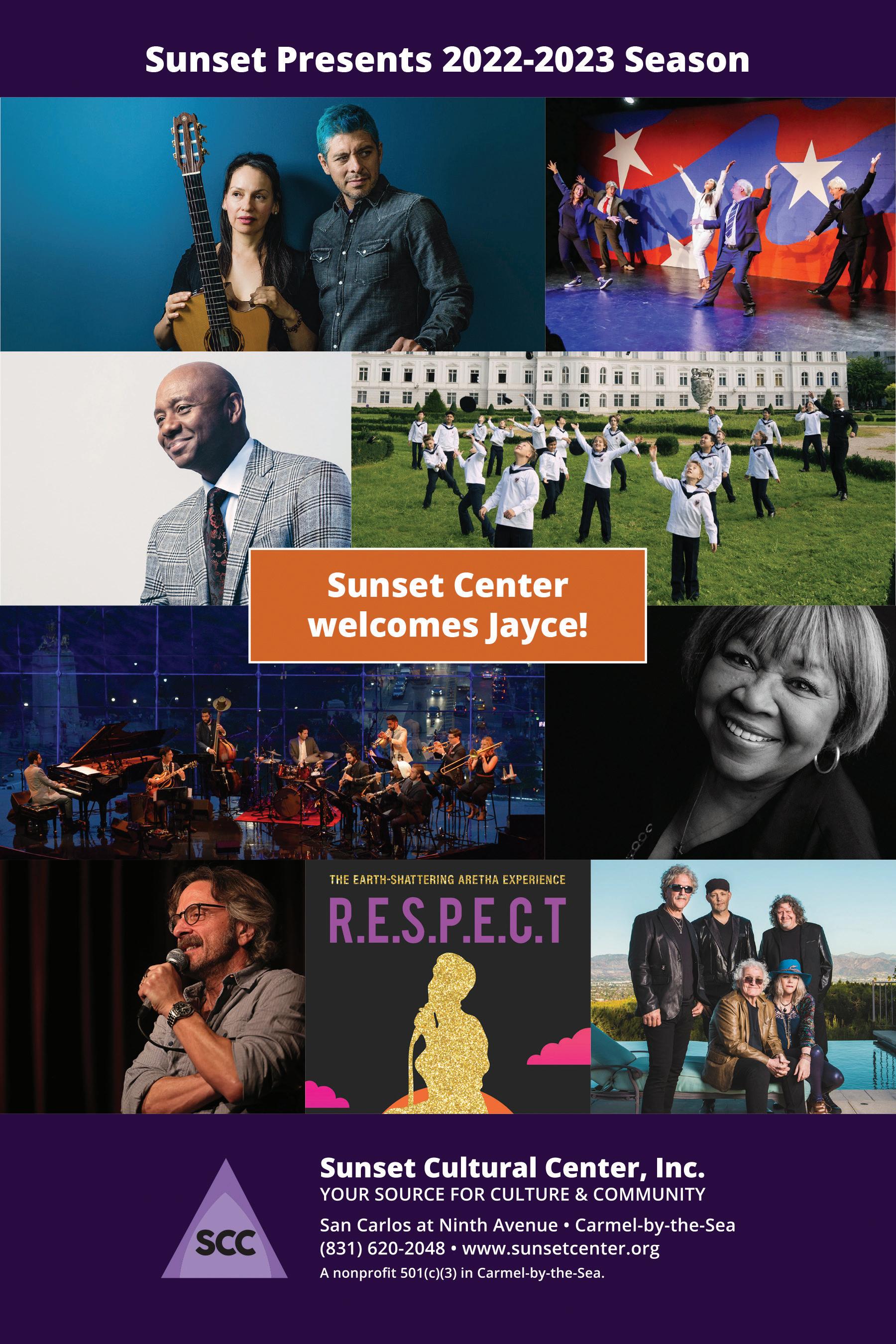
The Monterey Symphony is grateful for the receipt of the following leadership gifts
LEADERSHIP GIFTS:
Mr. and Mrs. W. Austin Barrows
The Richard and Betty Bell Music Director Fund

The Frances M. Benton Estate
Mr. and Mrs. Hilton Bialek
The Rodney Guifoil Estate
The Erling Lagerholm Estate
The Sara E. Mitchell Estate
The M. Kathleen Morgan Estate
The Eugene Noxon Estate
The Helen Oehler Estate
The Chris and Kevin Rabe Estate
The Shedlin Estate
The Shelia Webster Estate
Robert O. and Catherine L. McMahan Concert Master’s Chair
Sally Jo Snorf Timpani Chair
Miriam M. Godwin Musician Chair
RDML Edward J. and Ruth Hall
O’Donnell Musician Chair
Robert and Virginia Stanton Musician Chair
Reginald and Mary Swaner Musician Chair

The Monterey Symphony would like to thank the following institutional supporters
AmazonSmile Foundation
Arts Council for Monterey County
Barnet Segal Charitable Trust
Berkshire Foundation
Carmel Gives Fund of the Community Foundation for Monterey County
The Community Foundation for Monterey County, Community Impact
The David and Lucile Packard Foundation, Local Grantmaking

Deja Vu Carmel
IBM Corporation Matching Gift Program
Lauralie and J. Irvine Fund and the June P. Sheppard Fund for the Performing Arts of the Community Foundation Monterey County
KAZU, 90.3 FM
KRML, 94.7 FM
Monterey County Weekly
Monterey County Gives! Fund of the Community Foundation or Monterey County
Monterey Peninsula Foundation, host of the AT&T Pebble Beach Pro-Am and PURE Insurance Championship Impacting the First Tee
Monterey Private Wealth
Nancy Buck Ransom Foundation
Pacific Gas and Electric
RayneTech Solutions
William H. and Kristine M. Schuyler Foundation
The Robert and Virginia Stanton Endowment
The Symphony Fund at the Community Foundation for Monterey County




If you love to sing, Cabrillo can be your musical home!
Perform standard repertoire, commissioned masterworks, and music from all genre and periods in music history.
Have the opportunity to teach with the Cabrillo Youth Chorus Project (Ages 8-18).
Study conducting.
Sing on tour throughout the world.


Learn from our outstanding Artist-In-Residence Program.
Perform with Santa Cruz Symphony, Monterey Symphony, Ensemble Monterey Chamber Orchestra.
Grow musically through exciting classes, perform with professional musicians, attend masterclasses and stage performances as we make the music come alive!
Experience community-building through a shared, multi-generational learning environment.
Cabrillo Chorale I non-auditioned
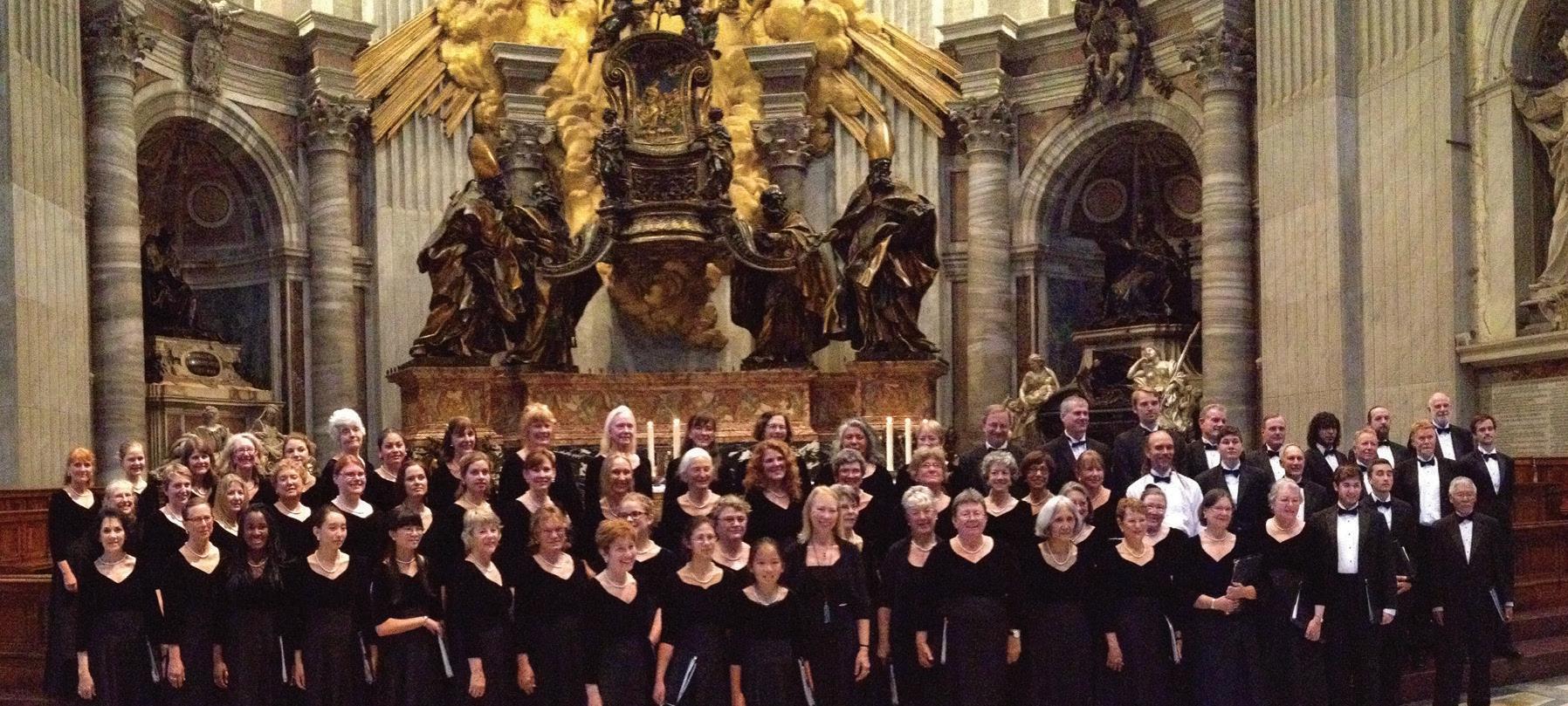
Cabrillo Symphonic Chorus I auditioned Cantiamo! Cabrillo Chamber Choir I auditioned
Cabrillo Opera I auditioned 4 levels of voice classes
A full curriculum of music-major classes

Cheryl Anderson, Director of Choral and Vocal Studies
Cabrillo College I 6500 Soquel Avenue I Aptos, CA 95003 I cranders@cabrillo.edu












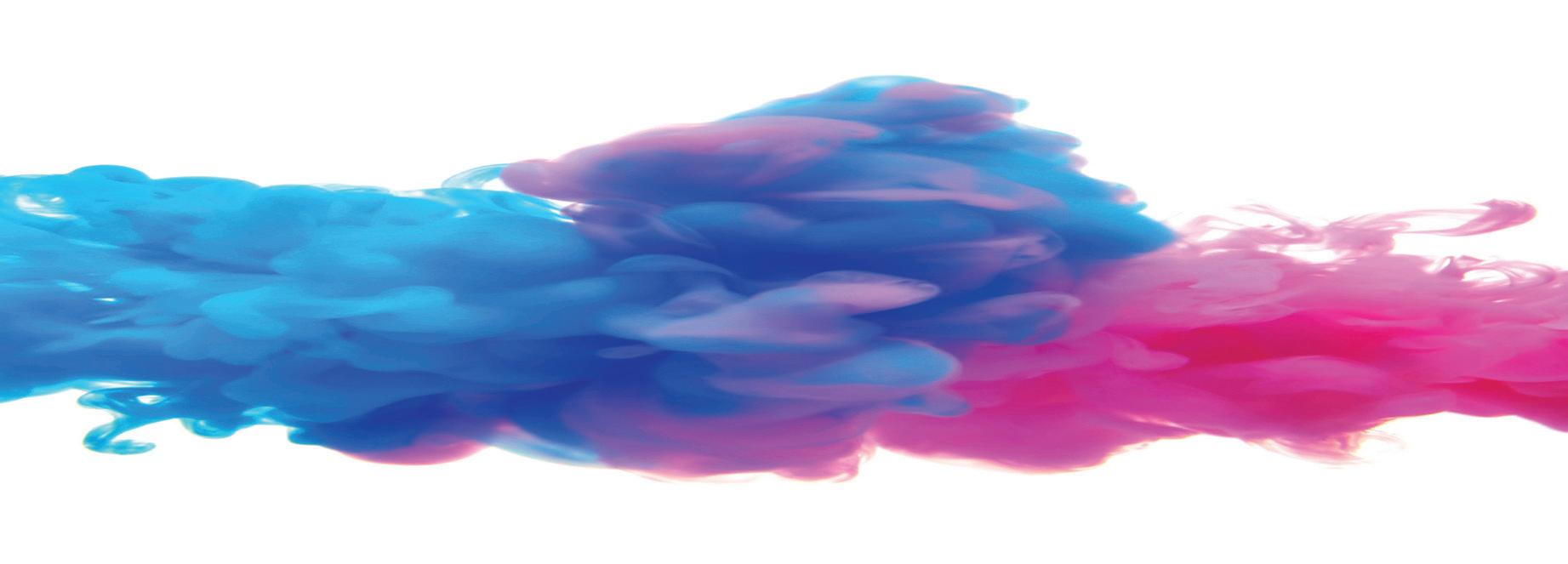
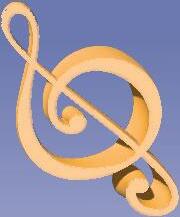



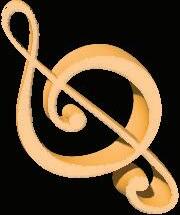














Jeremy Denk solo piano
October 2
Telegraph Quartet
November 6
George Li solo piano
December 11
is proud to support the The Arts Council for Monterey County

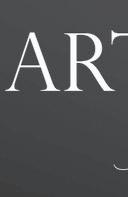

Monterey Symphony


Start your student off on the right note by supporting music education in the schools.


2023
Gryphon Trio
January 29
Esmé Quartet
March 12
Benjamin Grosvenor solo piano
March 26
Ilya Yakushev solo piano
April 16
LEARN MORE AT ARTS4MC.ORG

